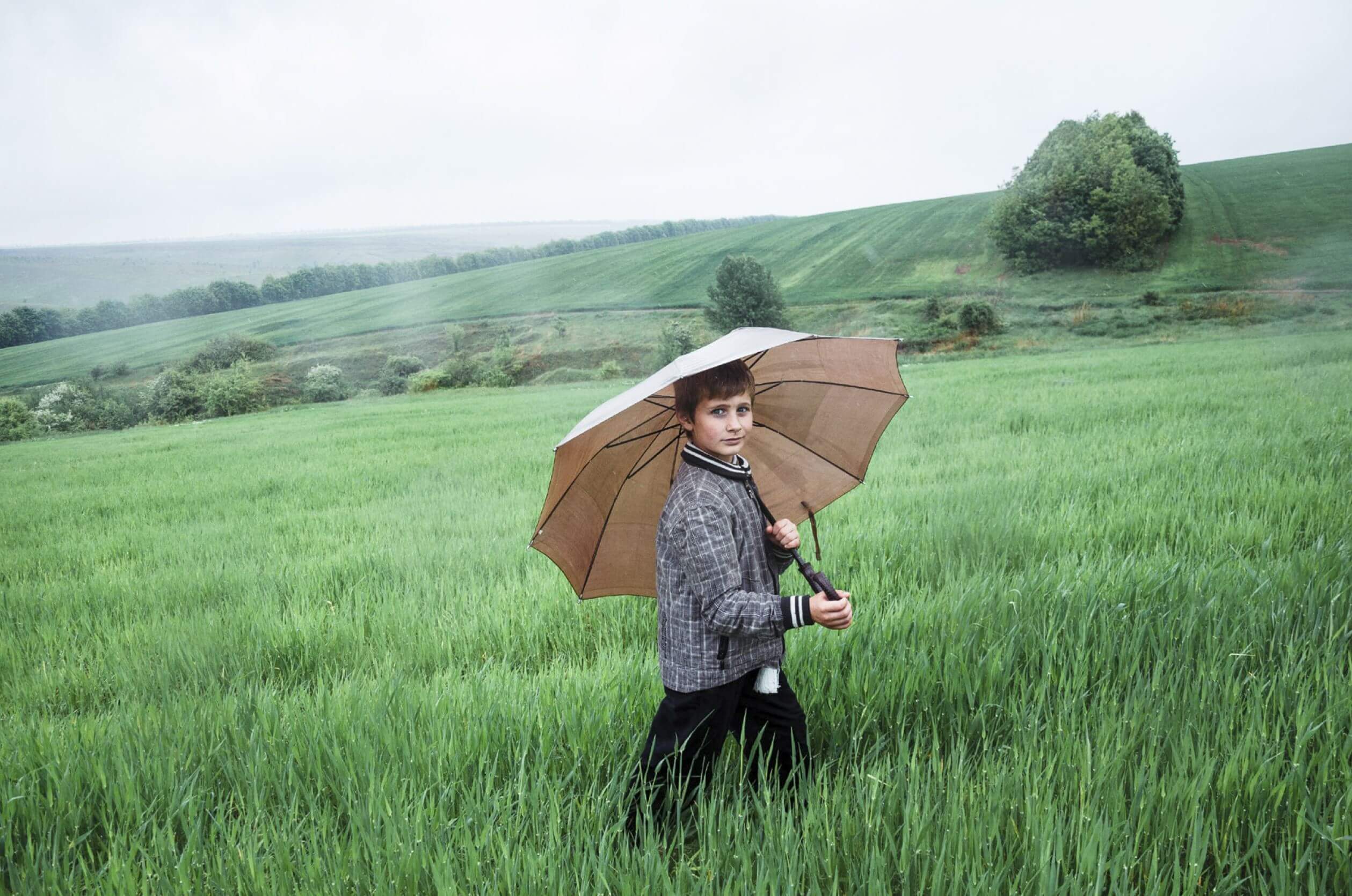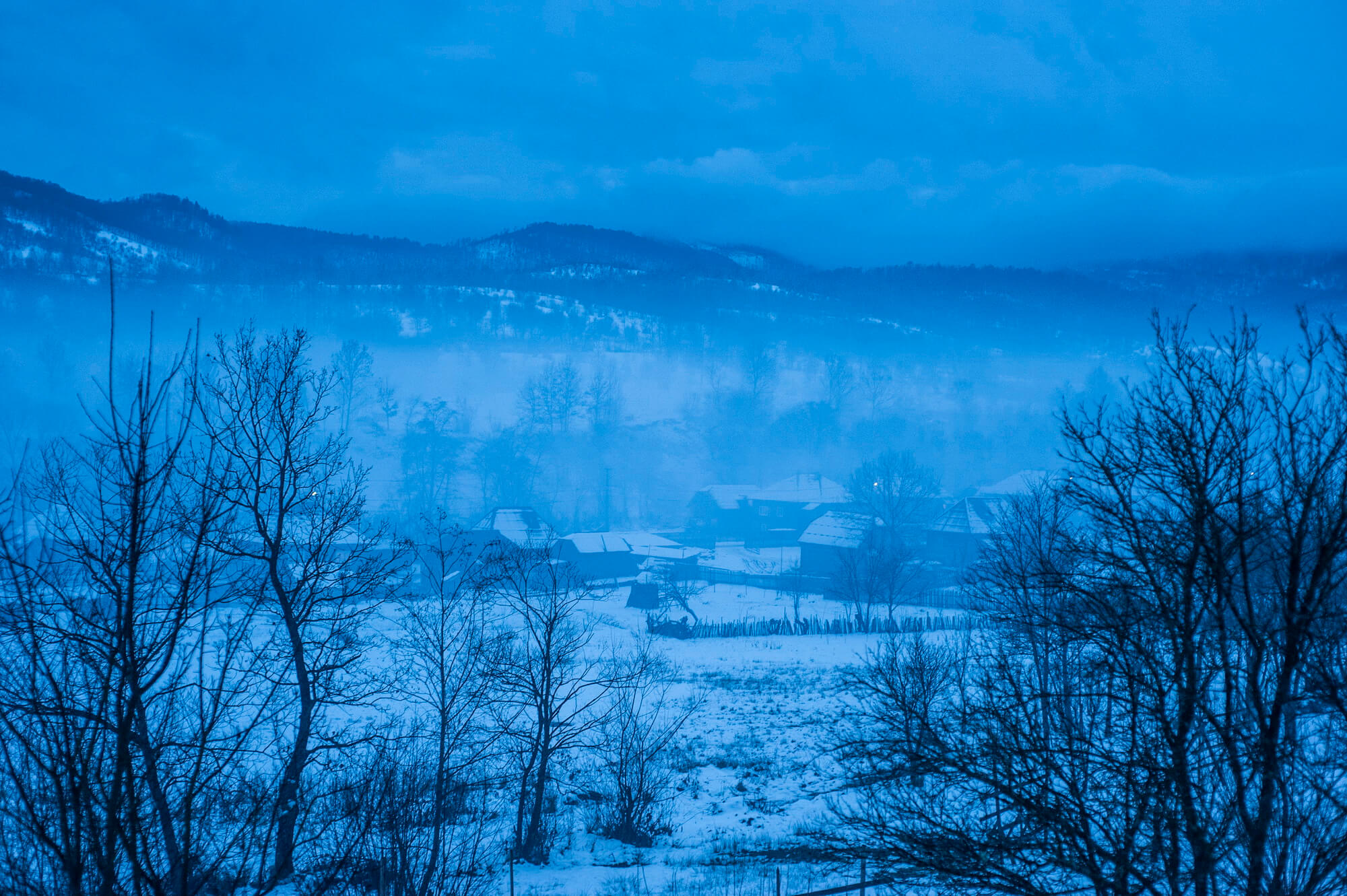
Romania: A view of the snow-covered village of Botiza in the mist. Most young people from this village have gone to France to work
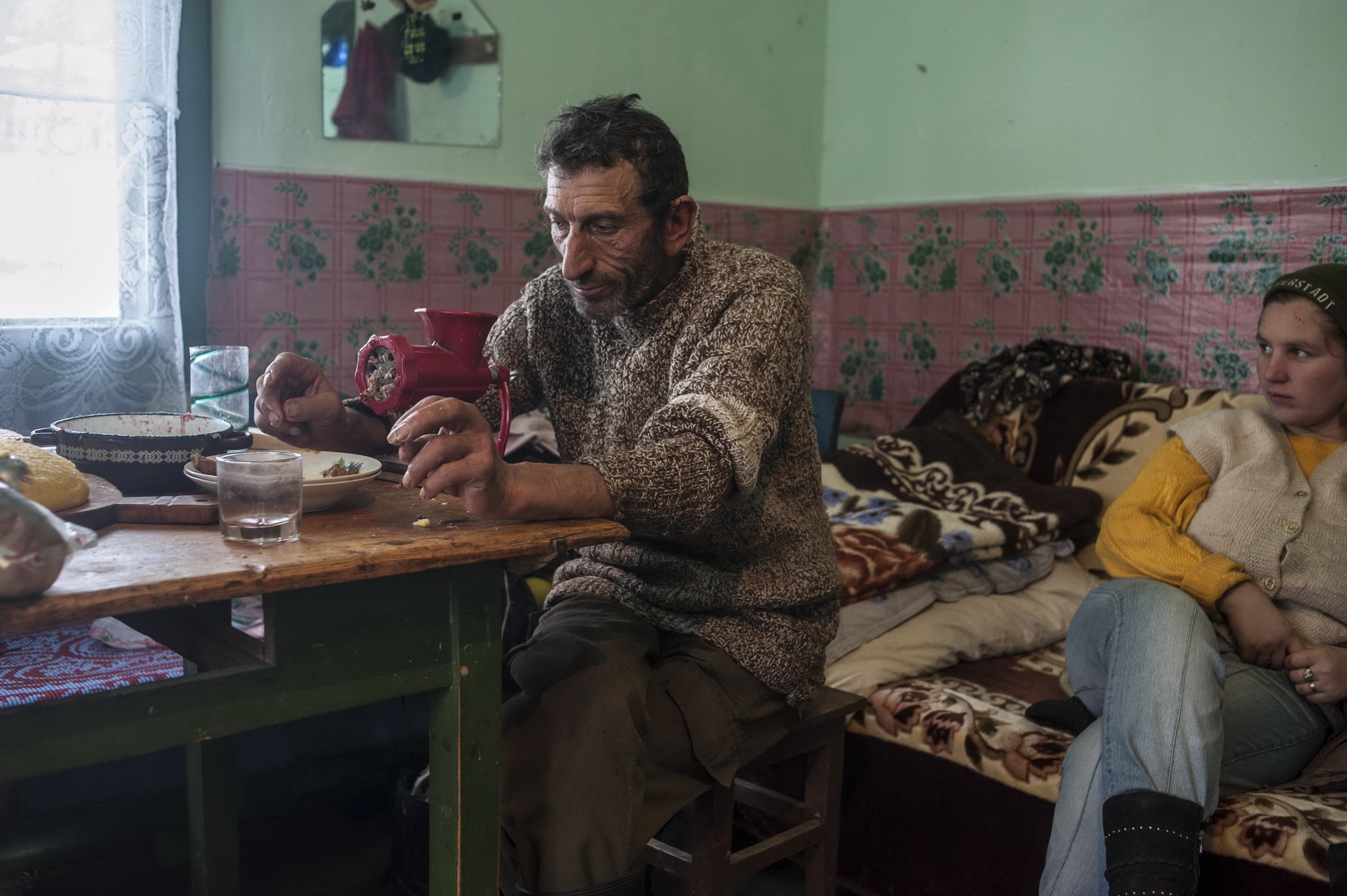
Botiza, Maramureș, Romania. People in the village are thinking to go abroad
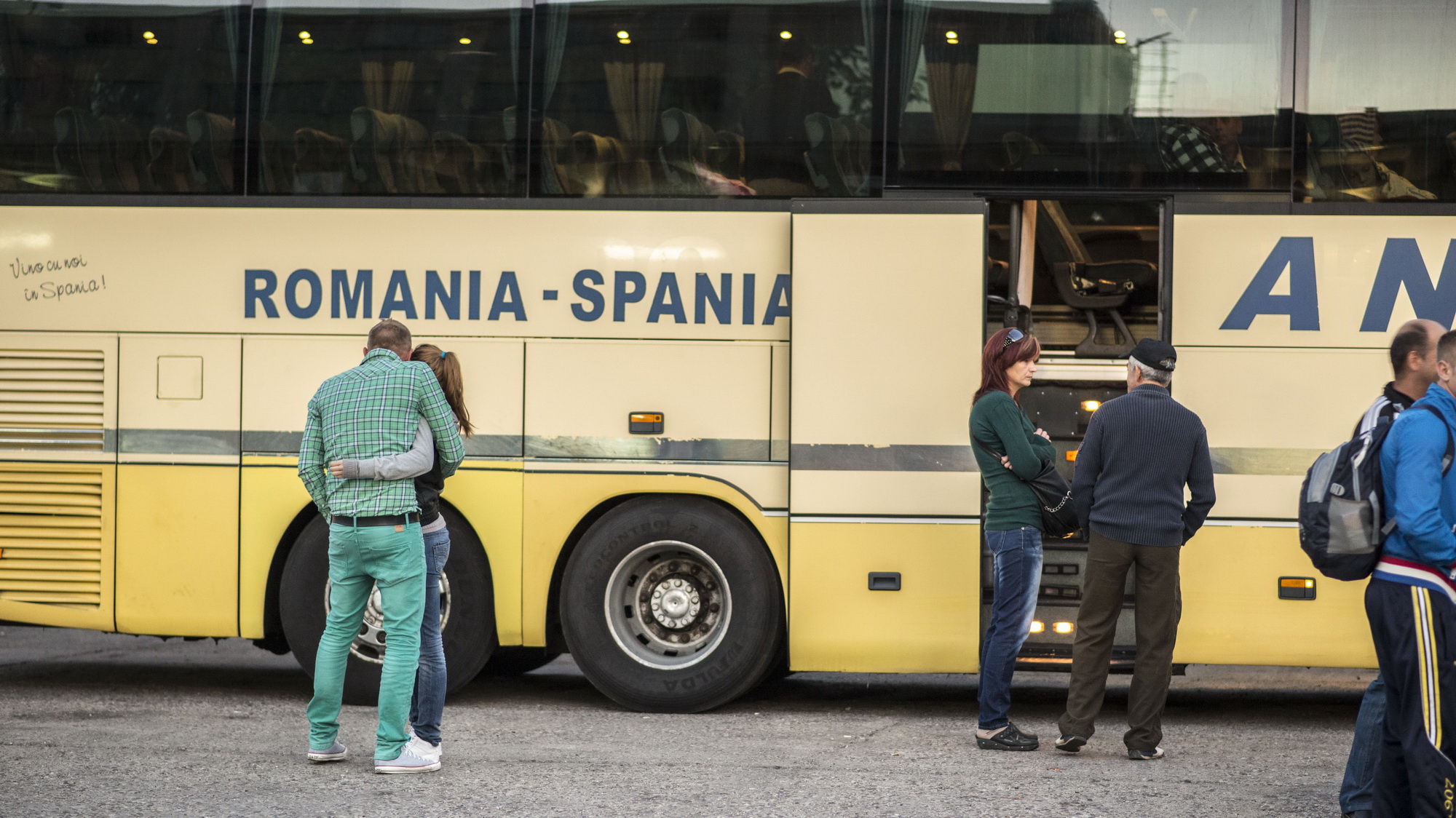
People embarking a bus leaving for Spain. Nasaud, Romania
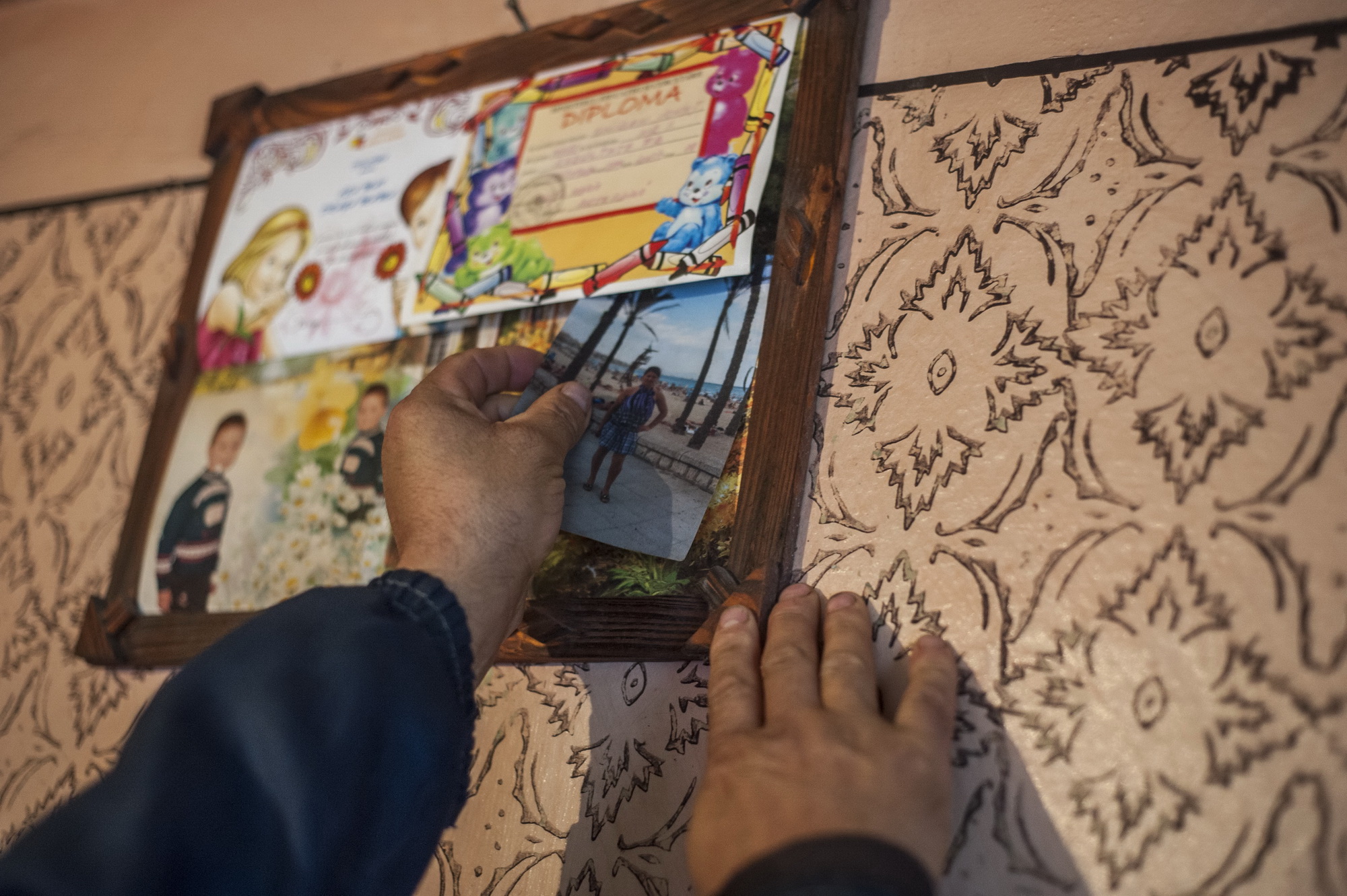
Stramtura, Maramureș. A man shows pictures his daughter is sending from abroad
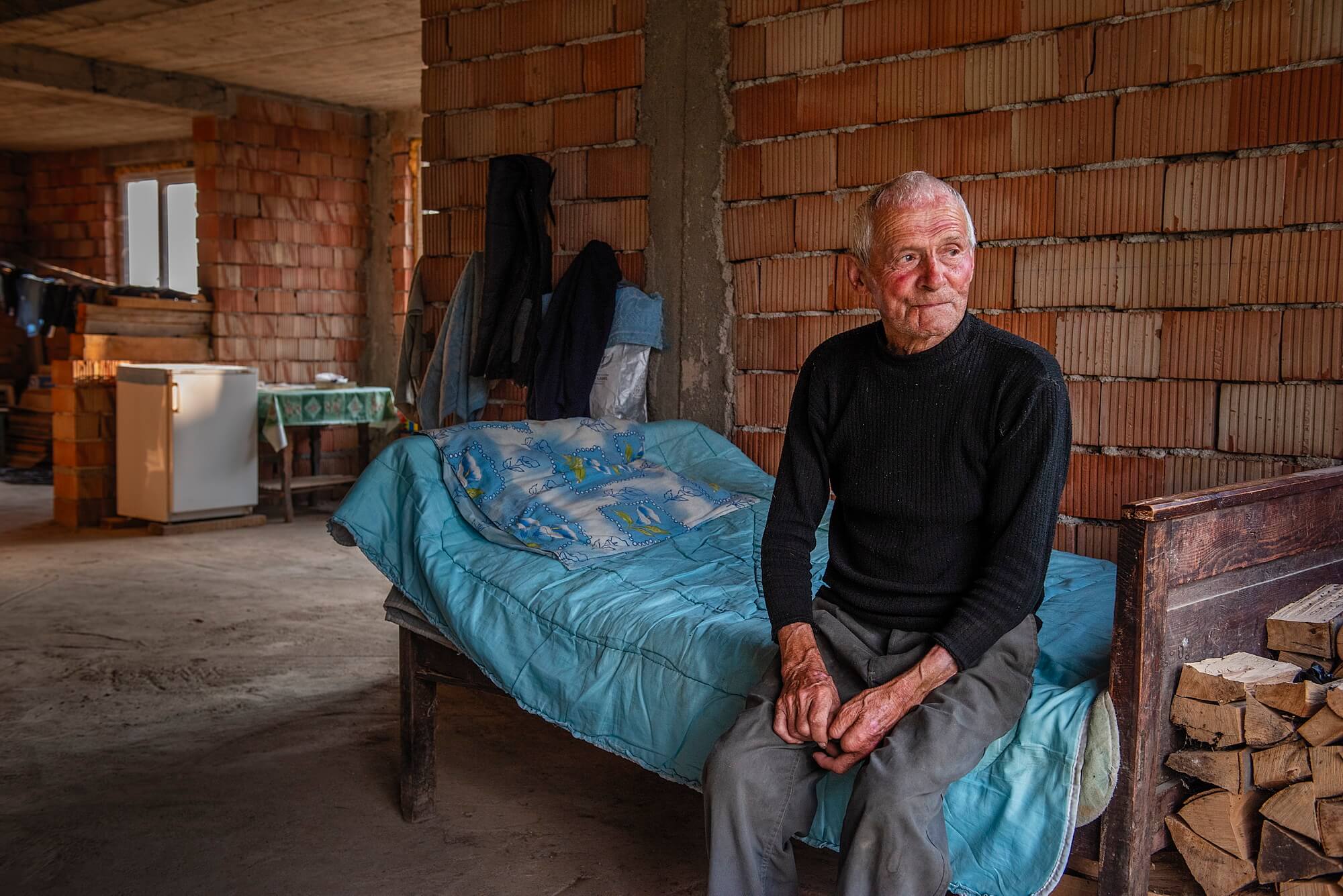
Ioan Gherman, 83, in his grandson's house. The grandson left to work in France and sent money home to finish the building work

Romanian emigrant worker sleeps on a train in Paris
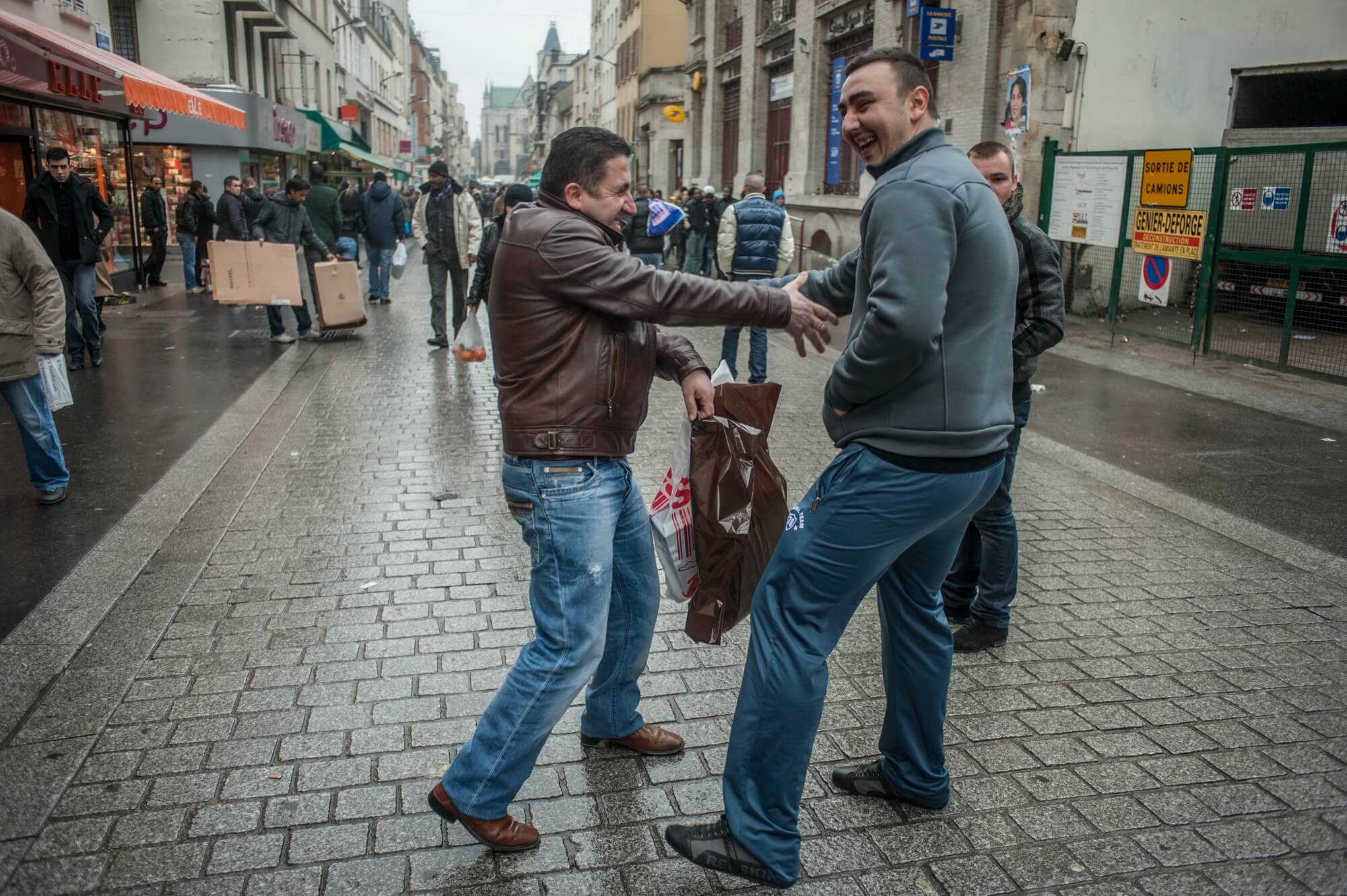
Emigrants from the same area (Țara Oașului) meet on the streets of Saint-Denis, outskirts Paris
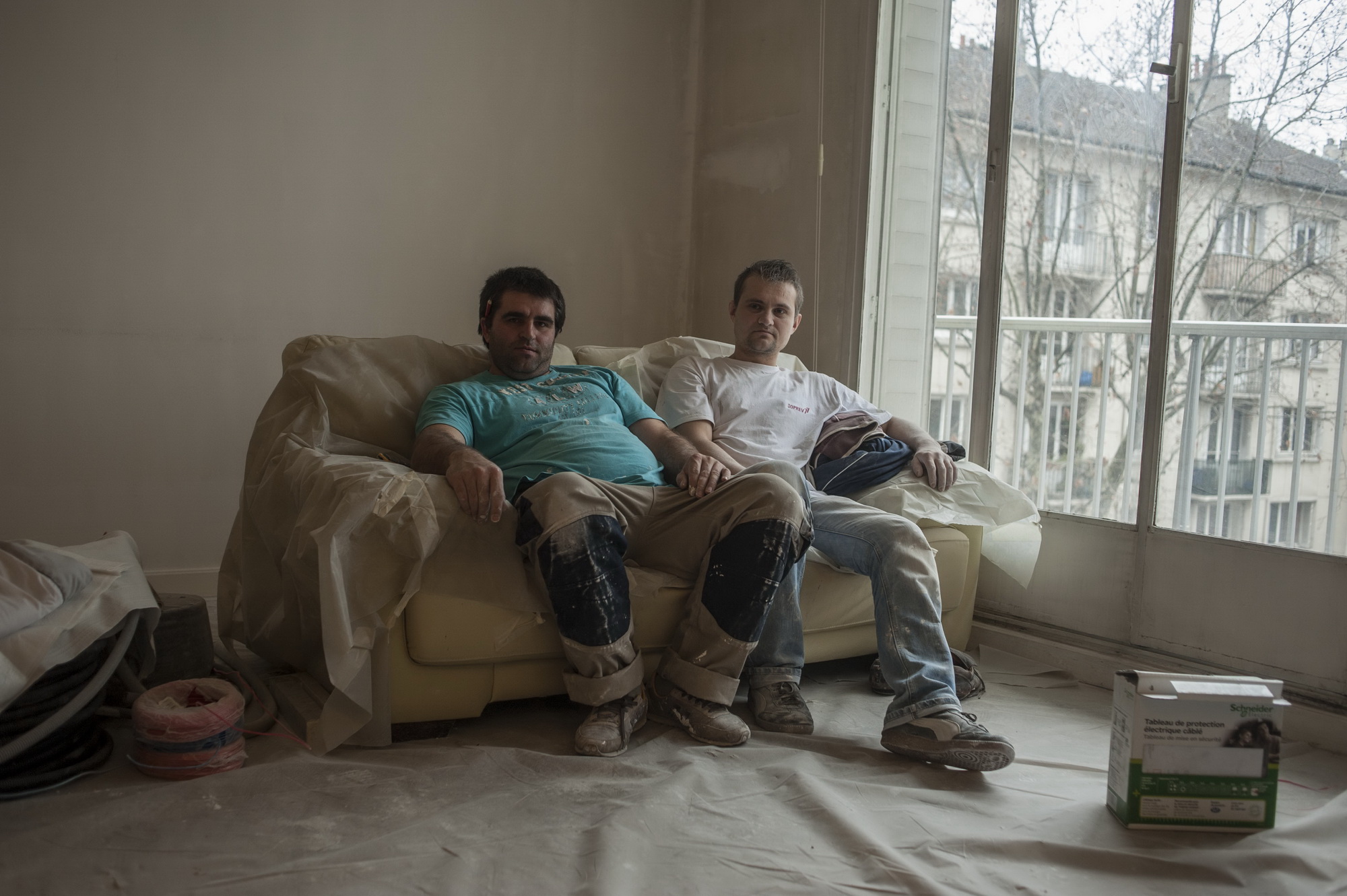
Two Romanian workers are taking a rest. Central Paris
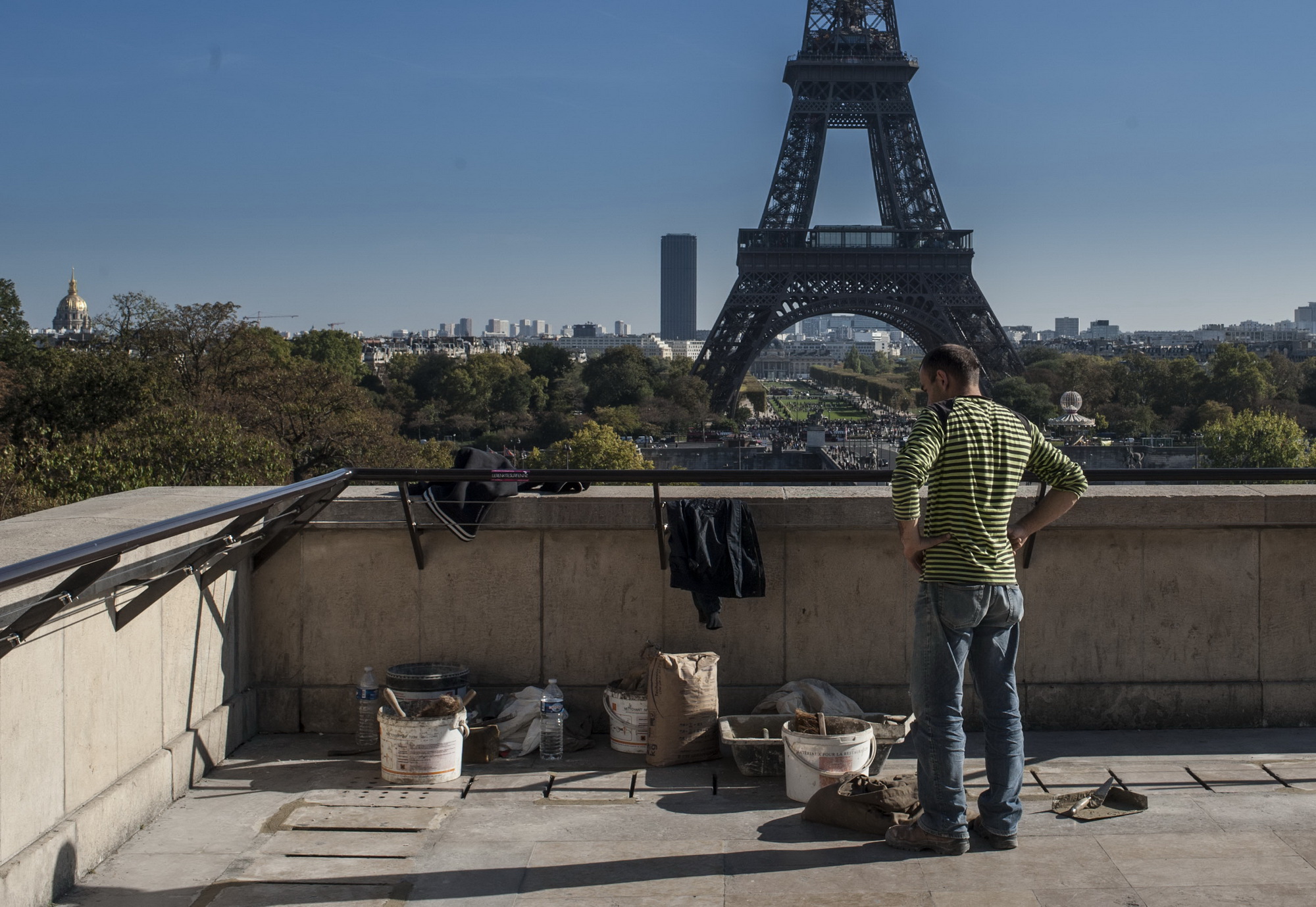
A construction worker in front of the Eifel Tower, Paris
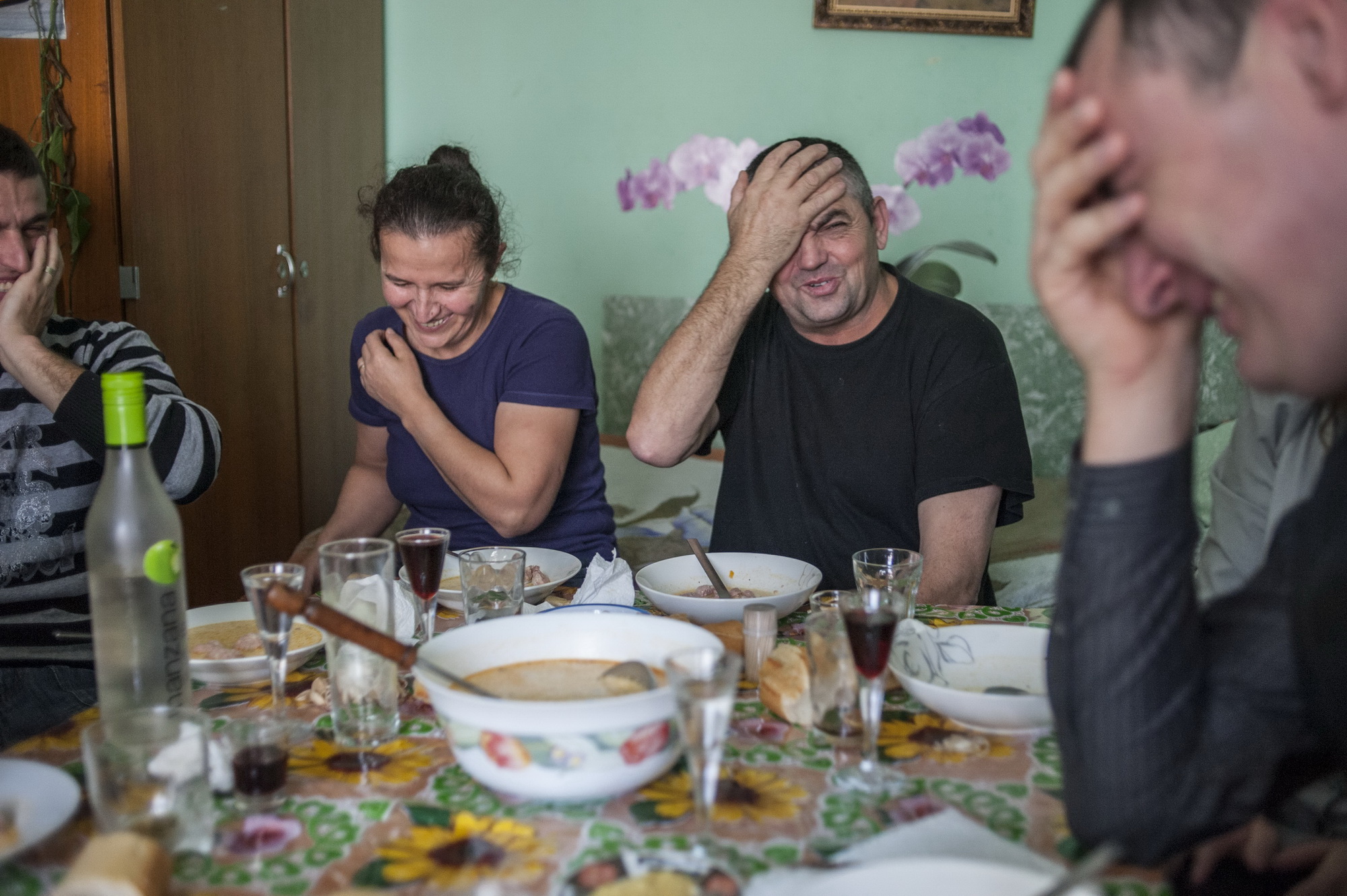
"This is how we enjoy ourselves - birthdays, weddings and christenings. It is the same back home. We have never had a vacation" - Cotros, a construction worker in Paris
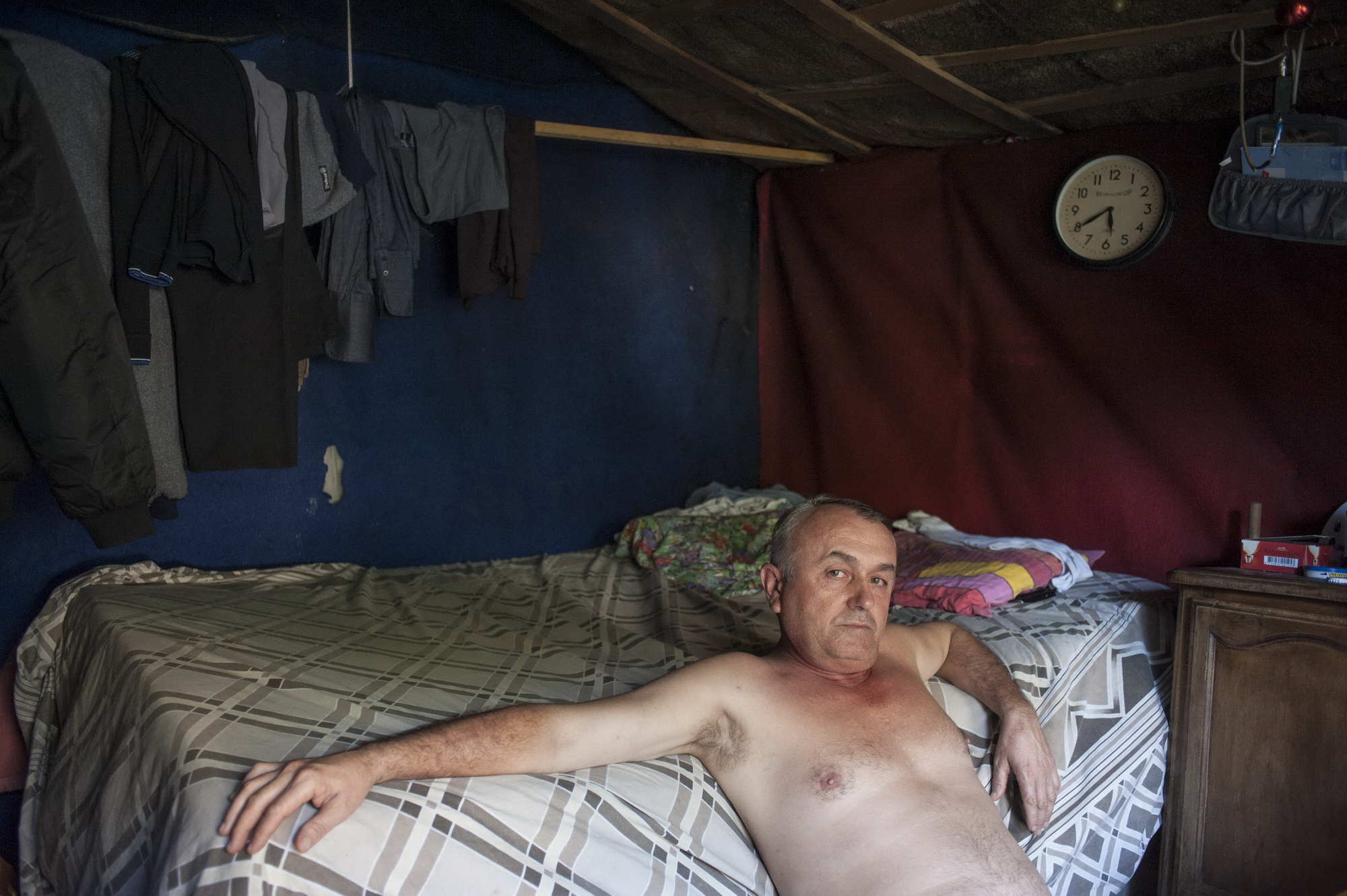
Ion Pop from Tarsolt, Maramureș, Romania, sits in his makeshift shelter in a forest on the outskirts of Paris. This settlement has been built by a group of around 80 people from Călinești, Oaș who have built huts out of materials they have been able to find and have been living here since 2002. Some of them have not found work in France and therefore can't afford to pay rent. Others prefer to live in these makeshift settlements to save money. Ion is planning to return to Romania since he wasn't able to find any work
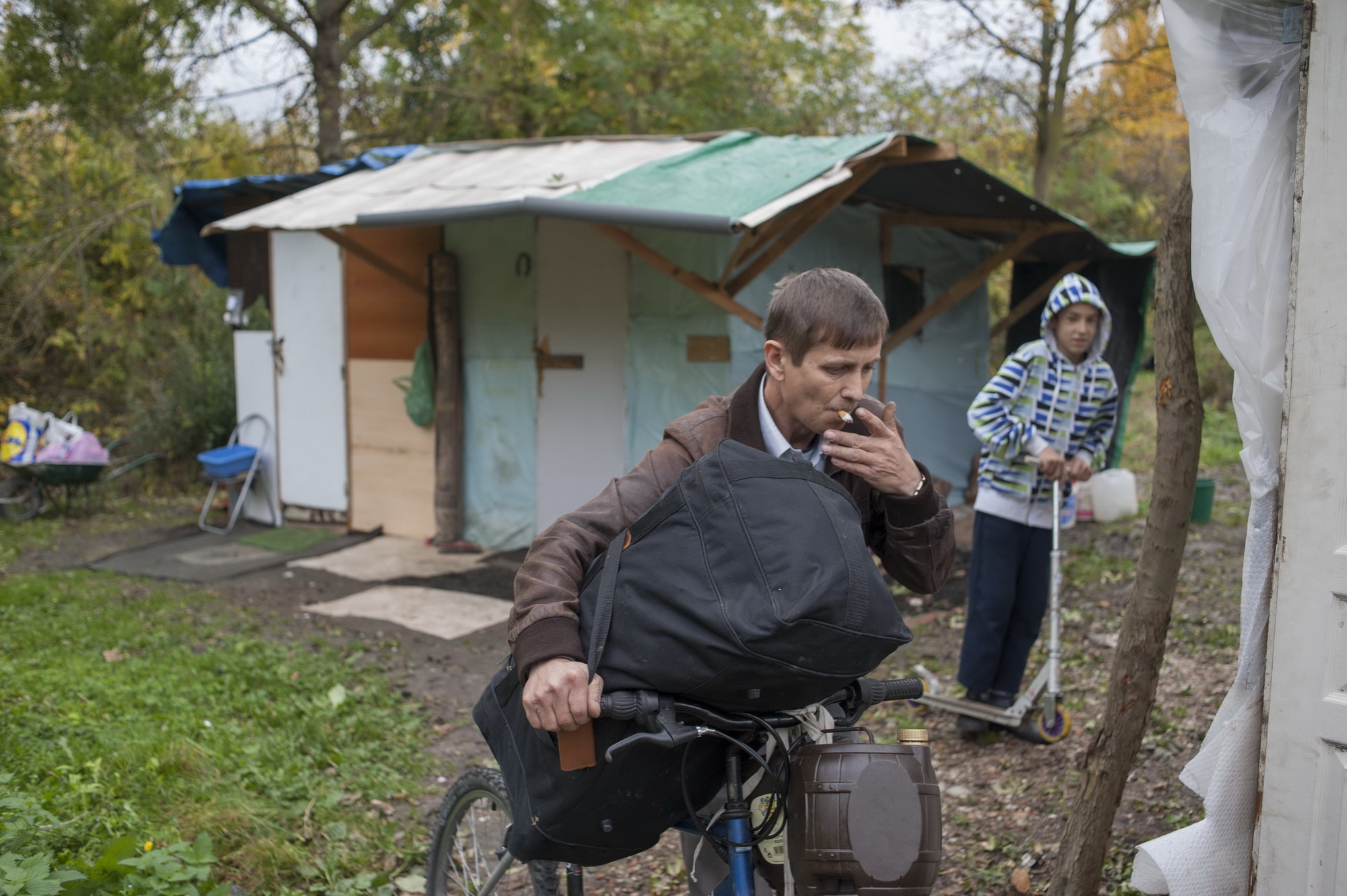
A man pushing a bicycle with a large bag smokes a cigarette while walking across a settlement of makeshift shelters.
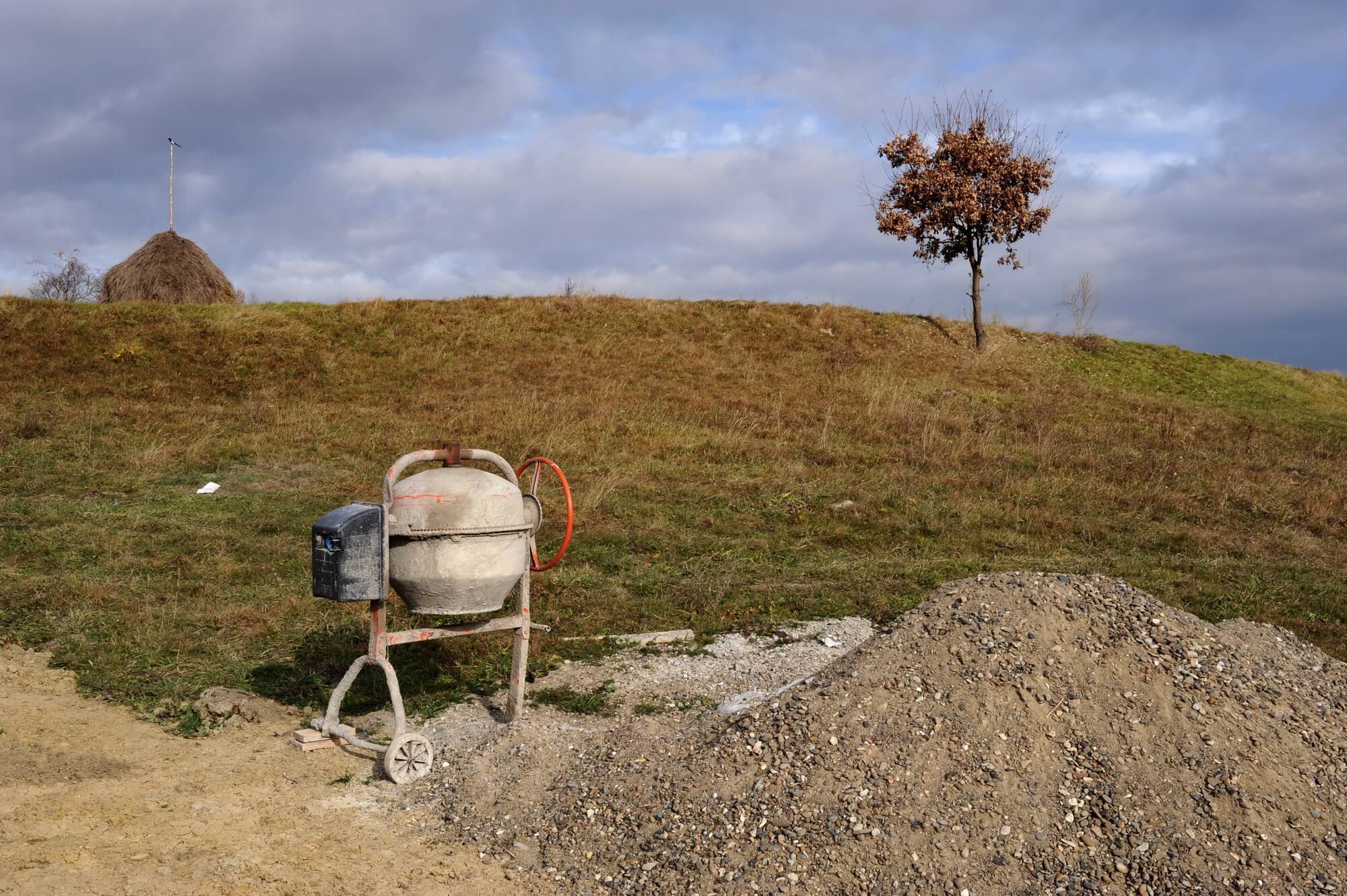
Landscape with concrete mixer, Botiza, Maramureș

The first two new buildings of Strâmtura village are being erected by two brothers who work in Spain
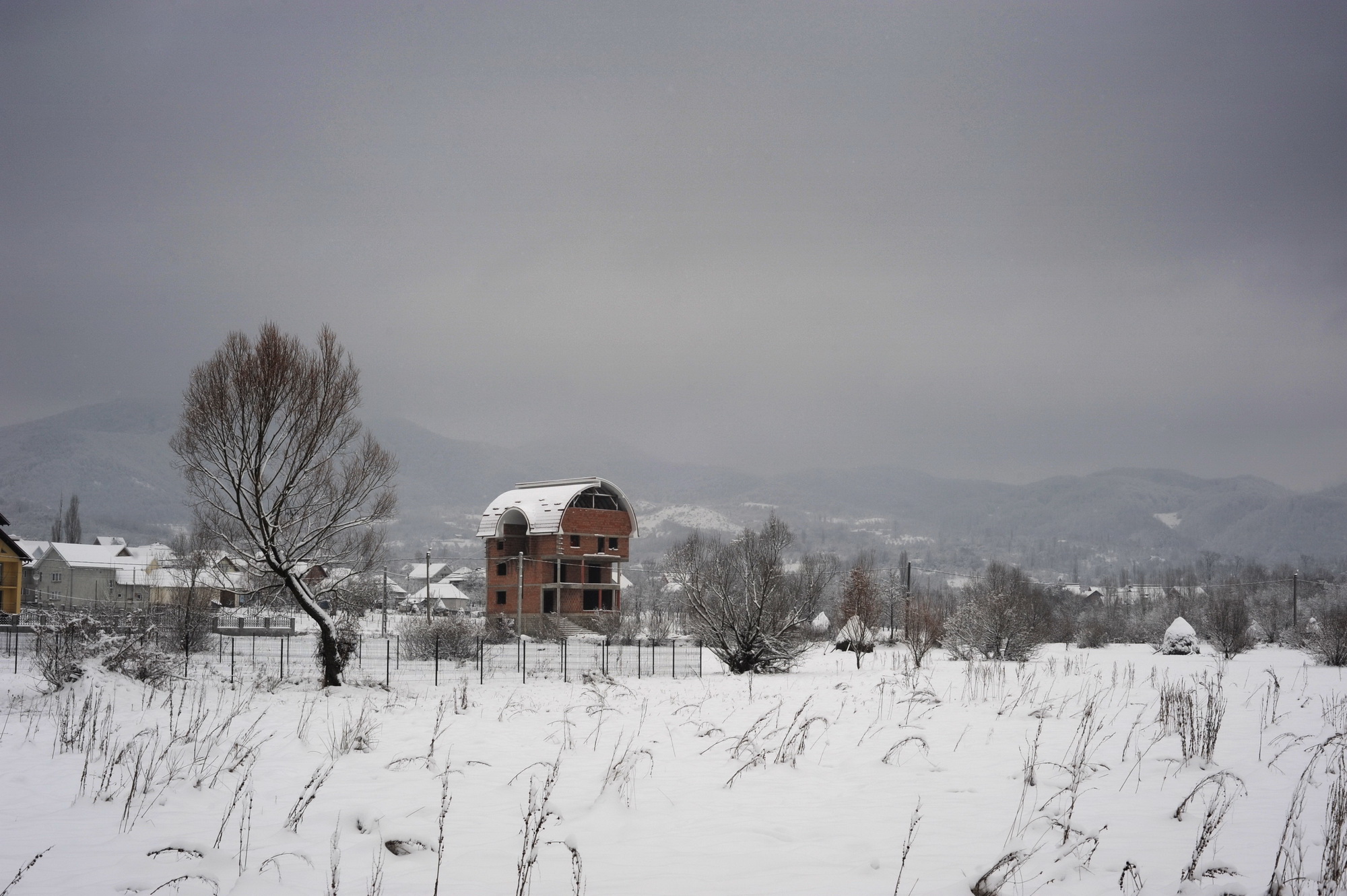
Tarsolt, Țara Oașului, Romania. The house of Mișca, a concrete worker in Paris.

Iacob Berende drinks a cup of water from the well behind his children's newly built home which is still under construction. His children have gone to the UK to work. Most people from this village used to be animal breeders but now the younger generation has left and gone abroad to work.
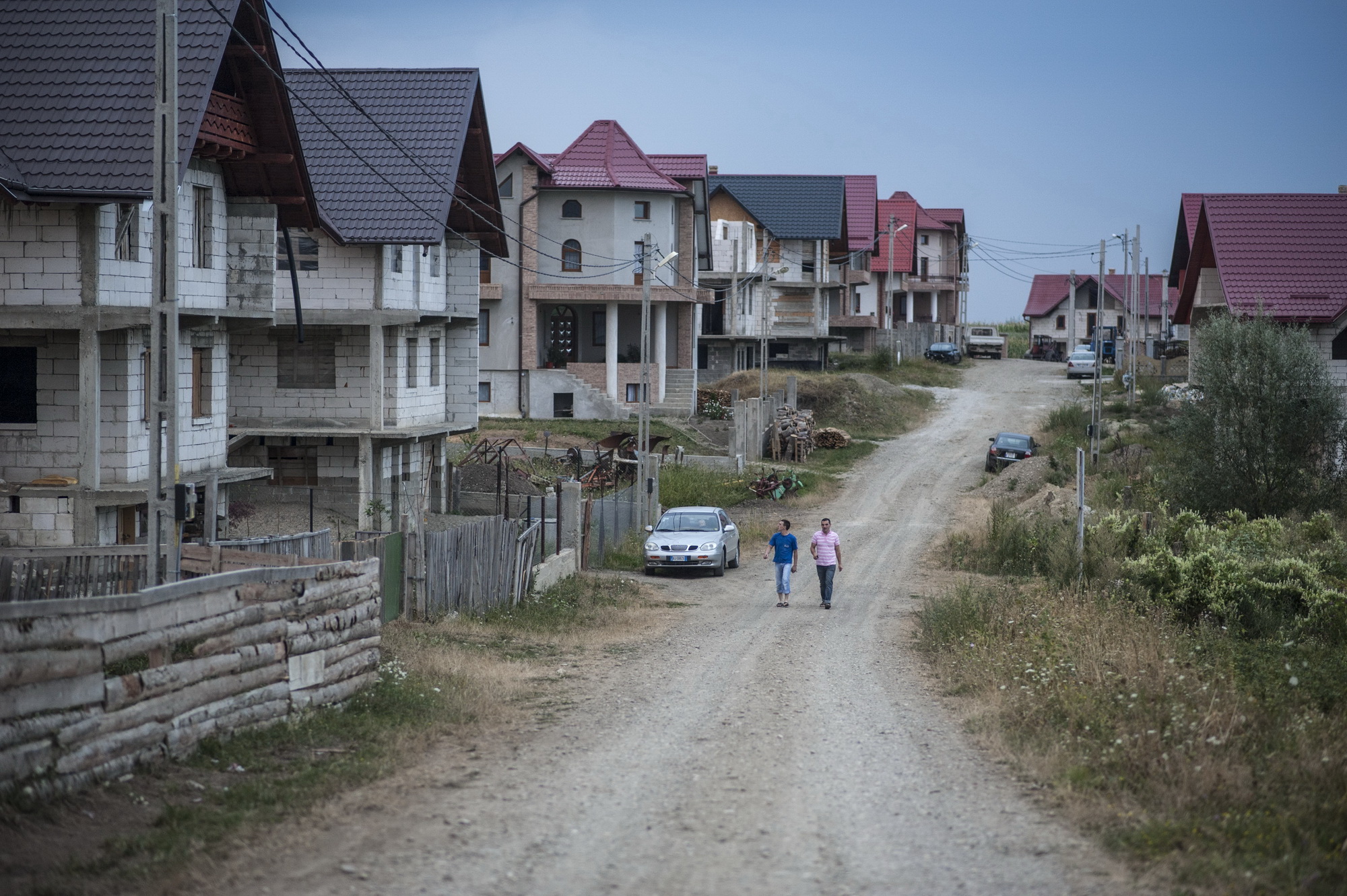
A road in the village of Cajvana lined with new houses being built by people who have made their money abroad, mainly in the construction industry
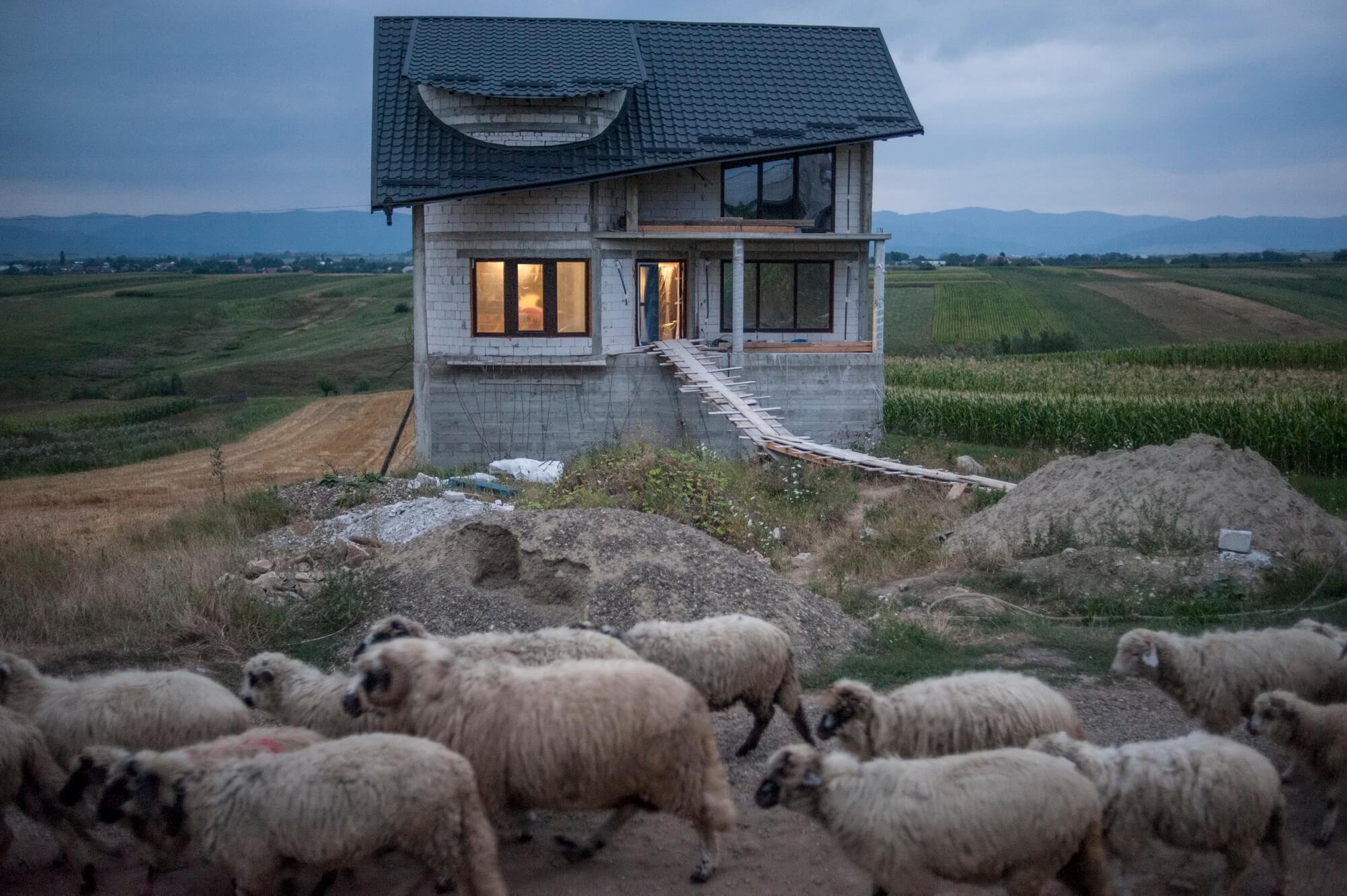
A flock of sheep passes a newly built house in the village of Cajvana. Many people in the village have made money abroad, mainly working in the construction industry and when they come back to Romania, many build large new homes.
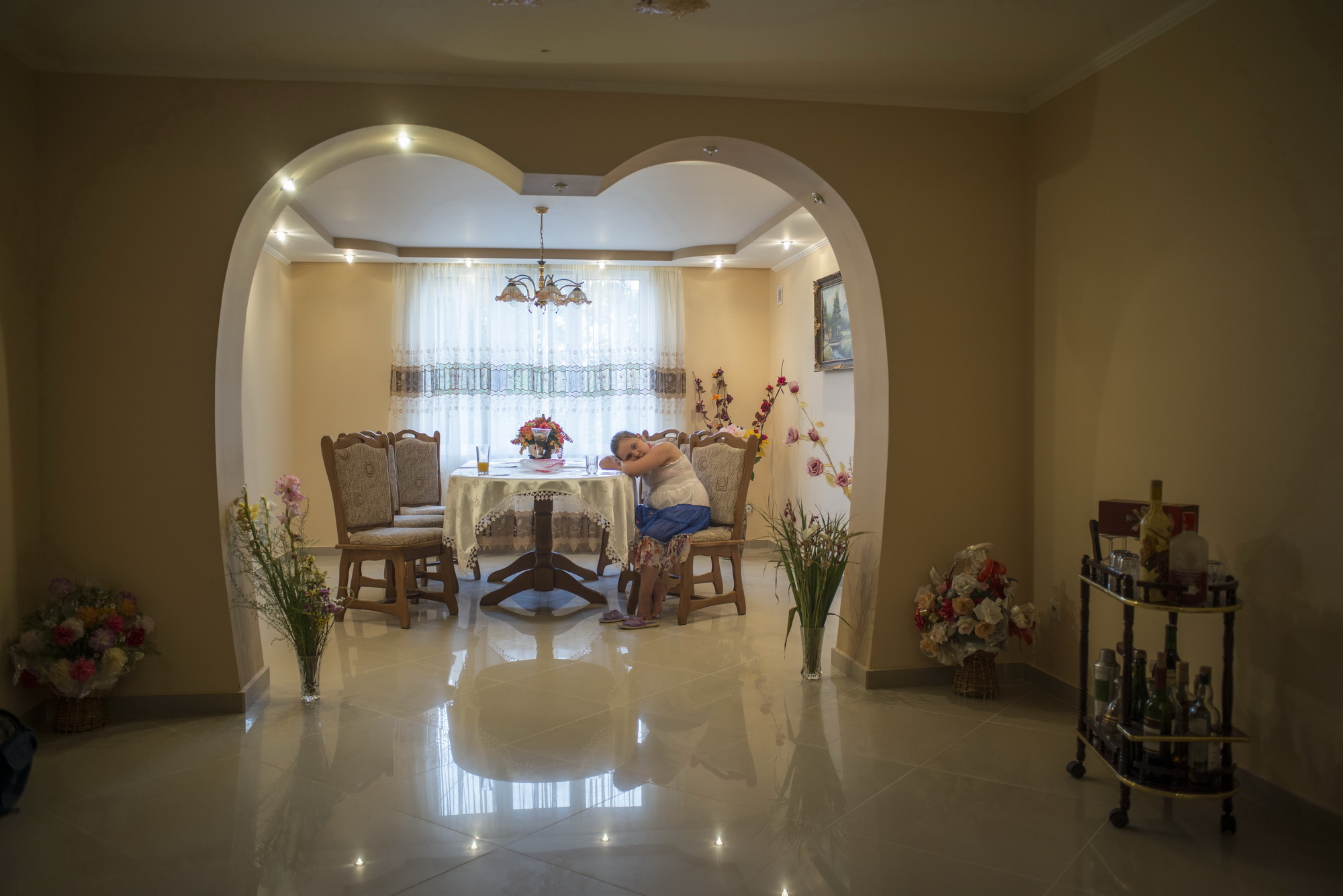
Jessica Ciorbă (8) sits in the living room of the new home her family is building in the village of Certeze. Her whole family works in Paris and she goes to school there but the family returns home for holidays.
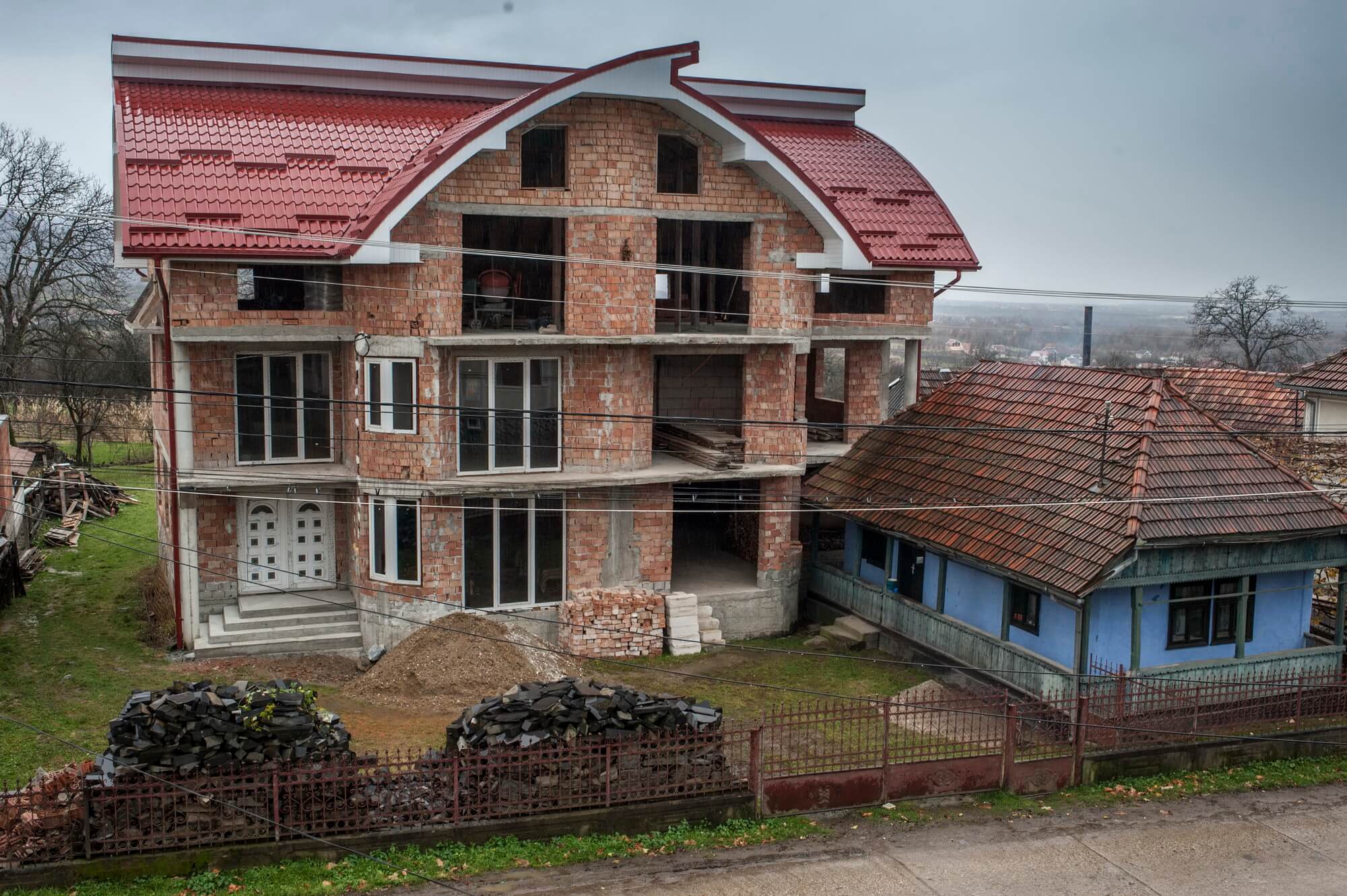
The small, one-story house belonging to the Gherman family clings to the side of a newly constructed three-story building which two brothers, grandsons of the original house's owner, are building. They work in Paris and have been building their family home back in Romania over several years
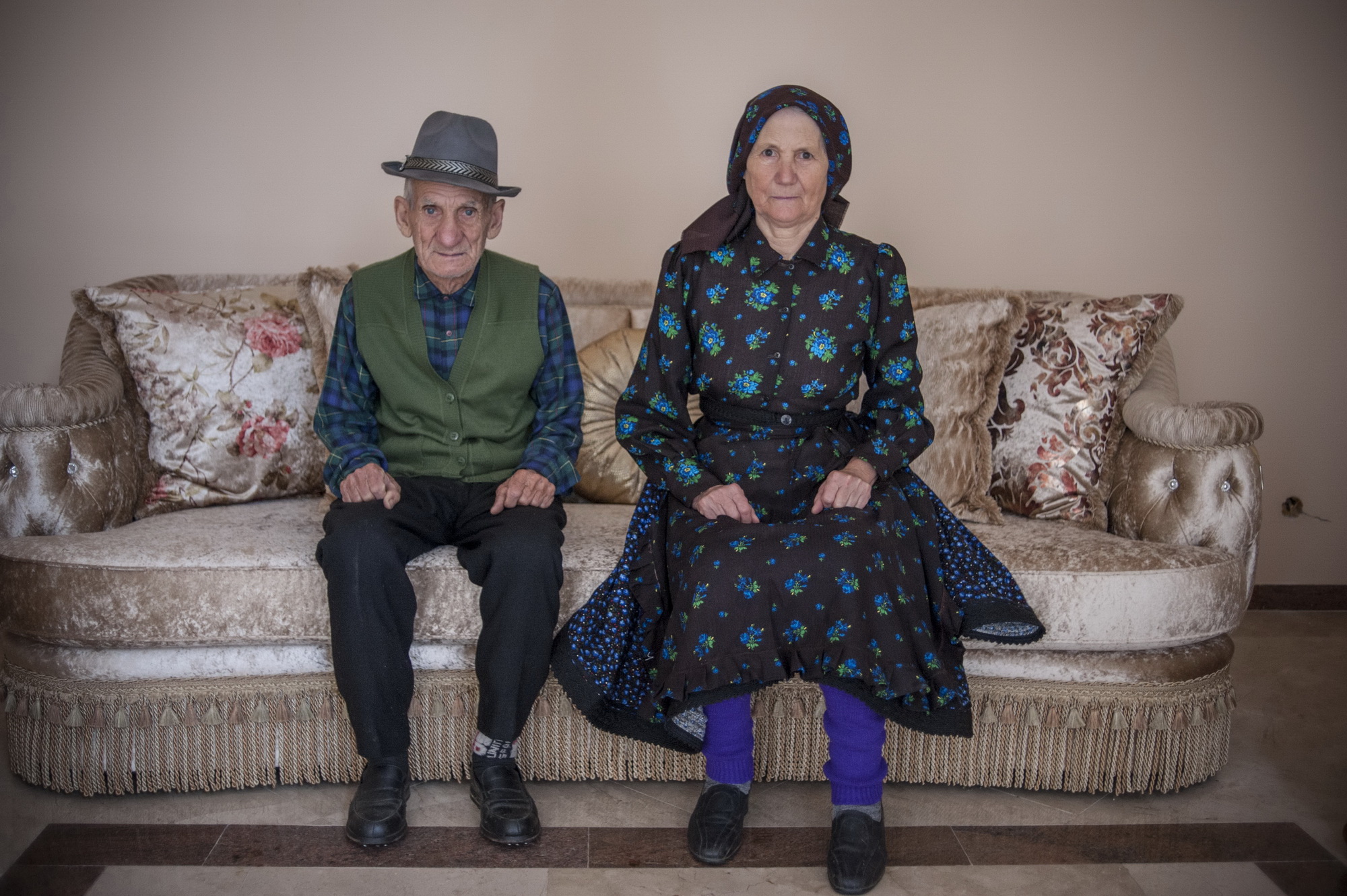
Gheorghe and Maria Balta sit on a sofa in a new home being built by their children who all work in Paris. They have extended and enlarged the old house into a much larger building which now has two floors and a glass front
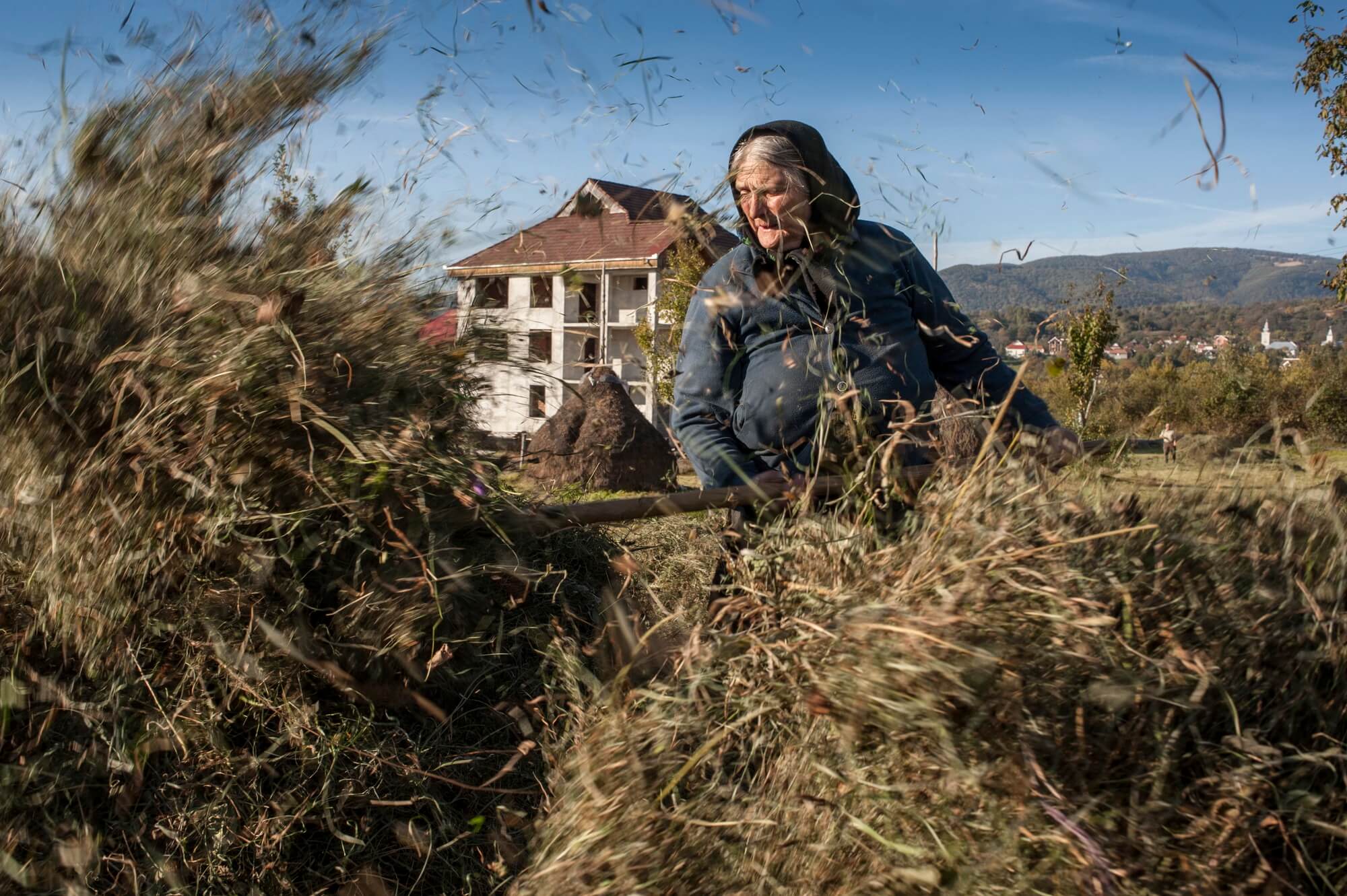
An elderly woman prepares hay for feeding her animals on a field near her house. Most of the young people in these villages have left work abroad, leaving only the elderly behind
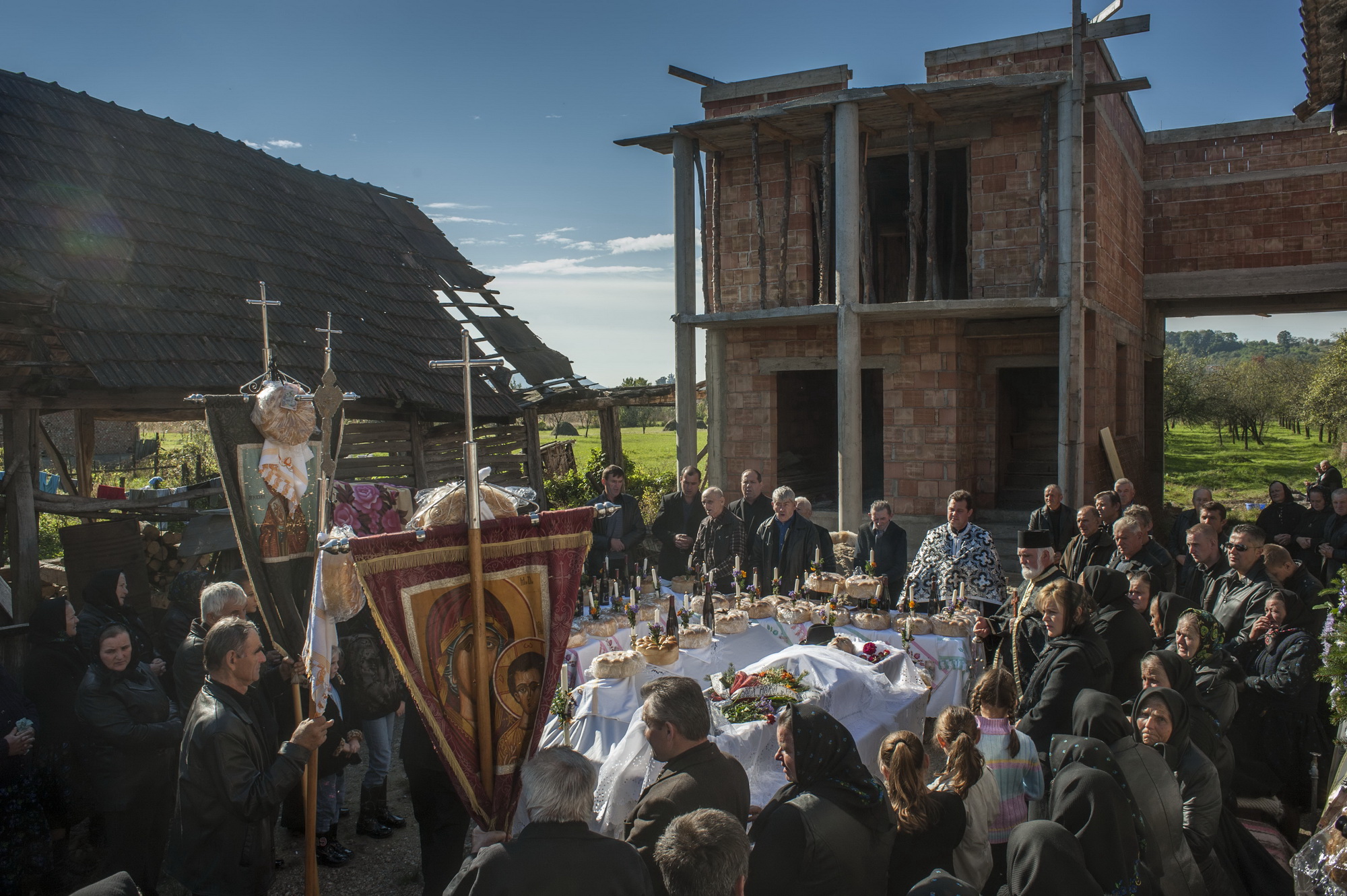
People gather for the funeral of an 84-year-old man in the yard of his house. Next to his house, his grandson who is working in Spain is building a new, much larger, house

Petre Dorle takes his Ferrari for a spin in the village during the holidays when he visits from France. Petre is a successful entrepreneur who hires Romanian workers to come to France to work in the construction industry
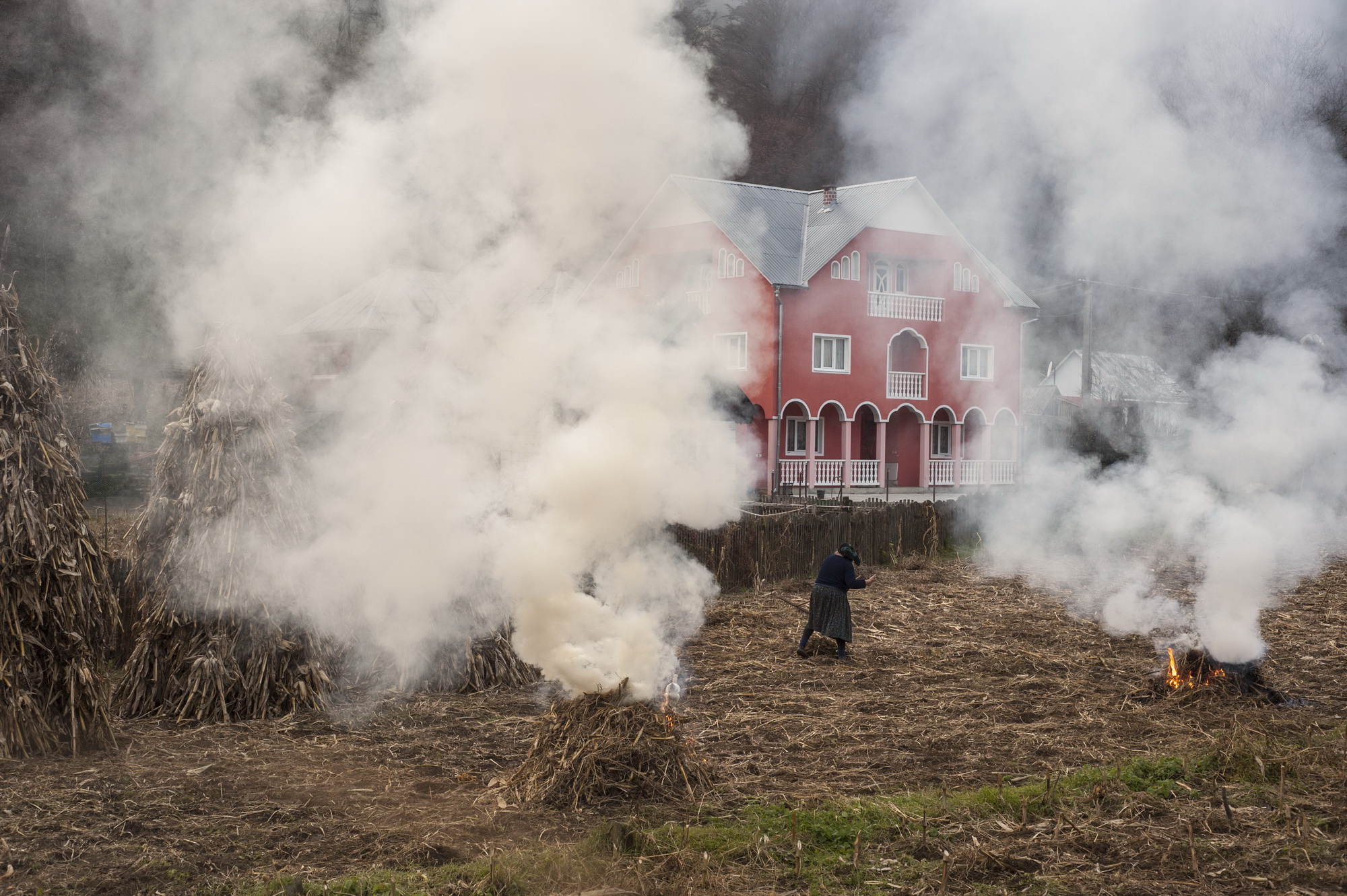
Rebrișoara
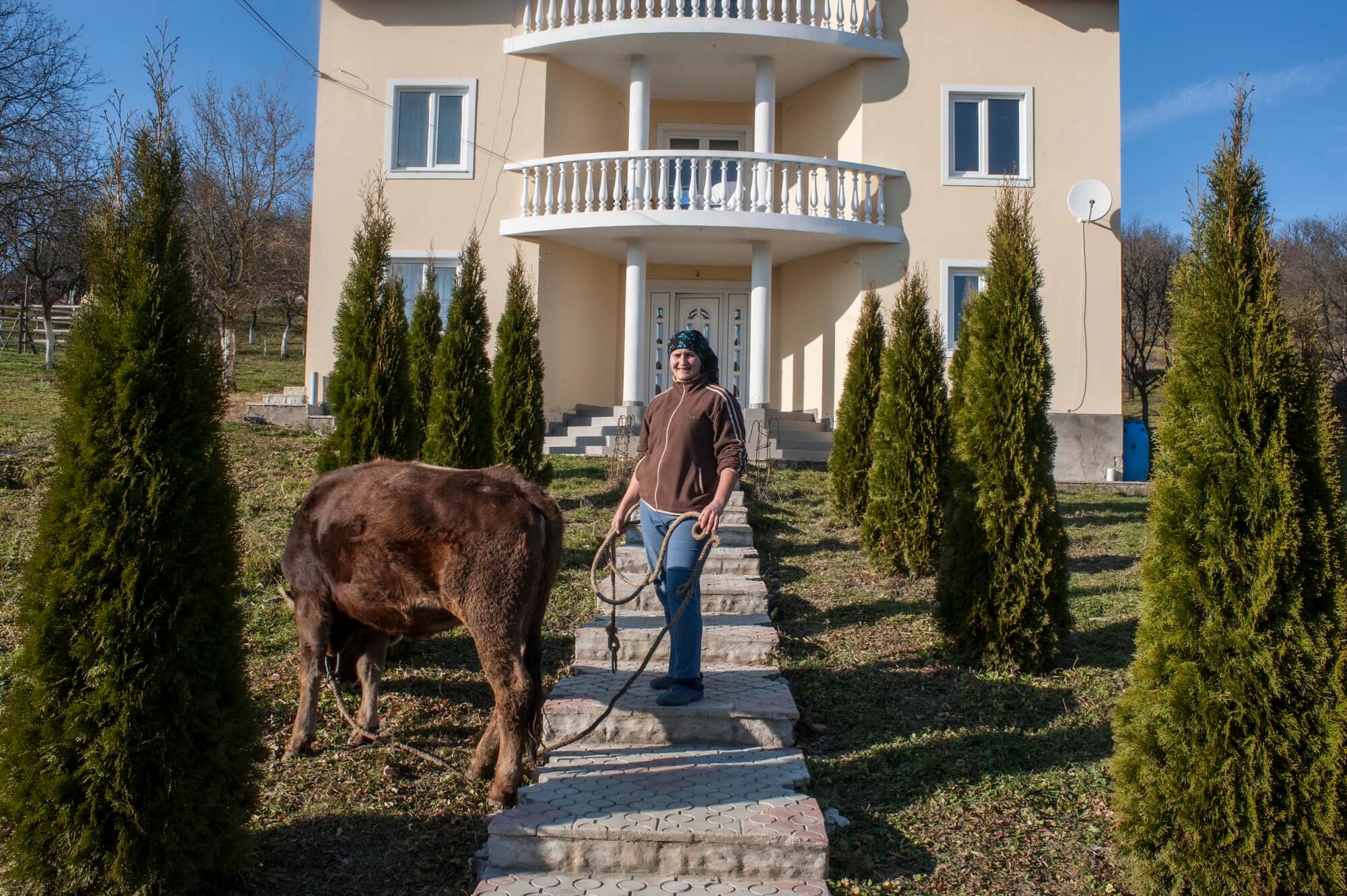
A woman with a calf. Her sister works in the USA and sends the money home, to build the house

One of the most influential businessmen in Certeze village sings a song at a celebration in the village. Two musicians accompany him on guitar and violin
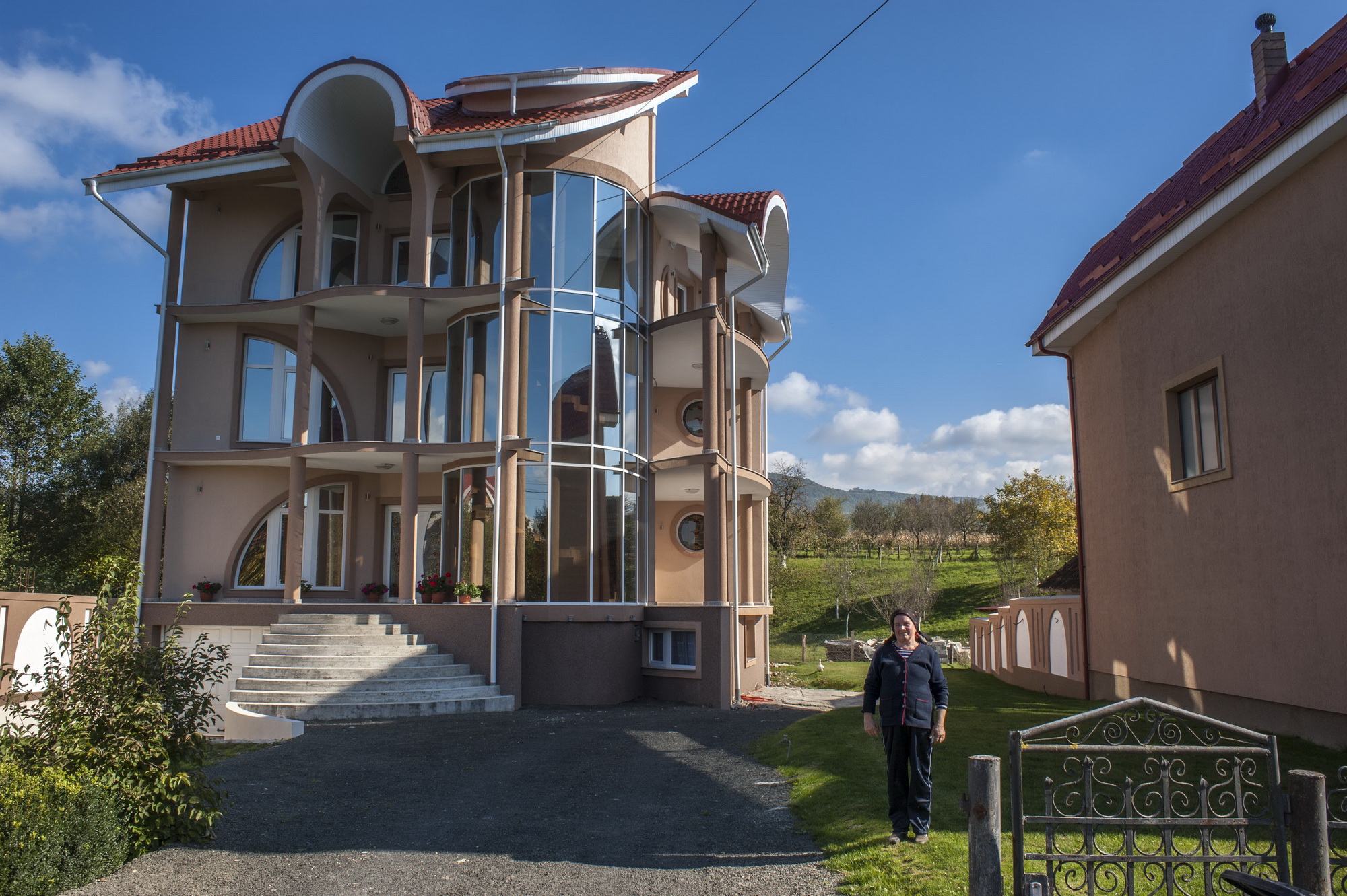
Balta Floarea in front of her daughter's unfinished house. Her daughter works in a patisserie in Paris and is slowly building her new house in her native village in Romania
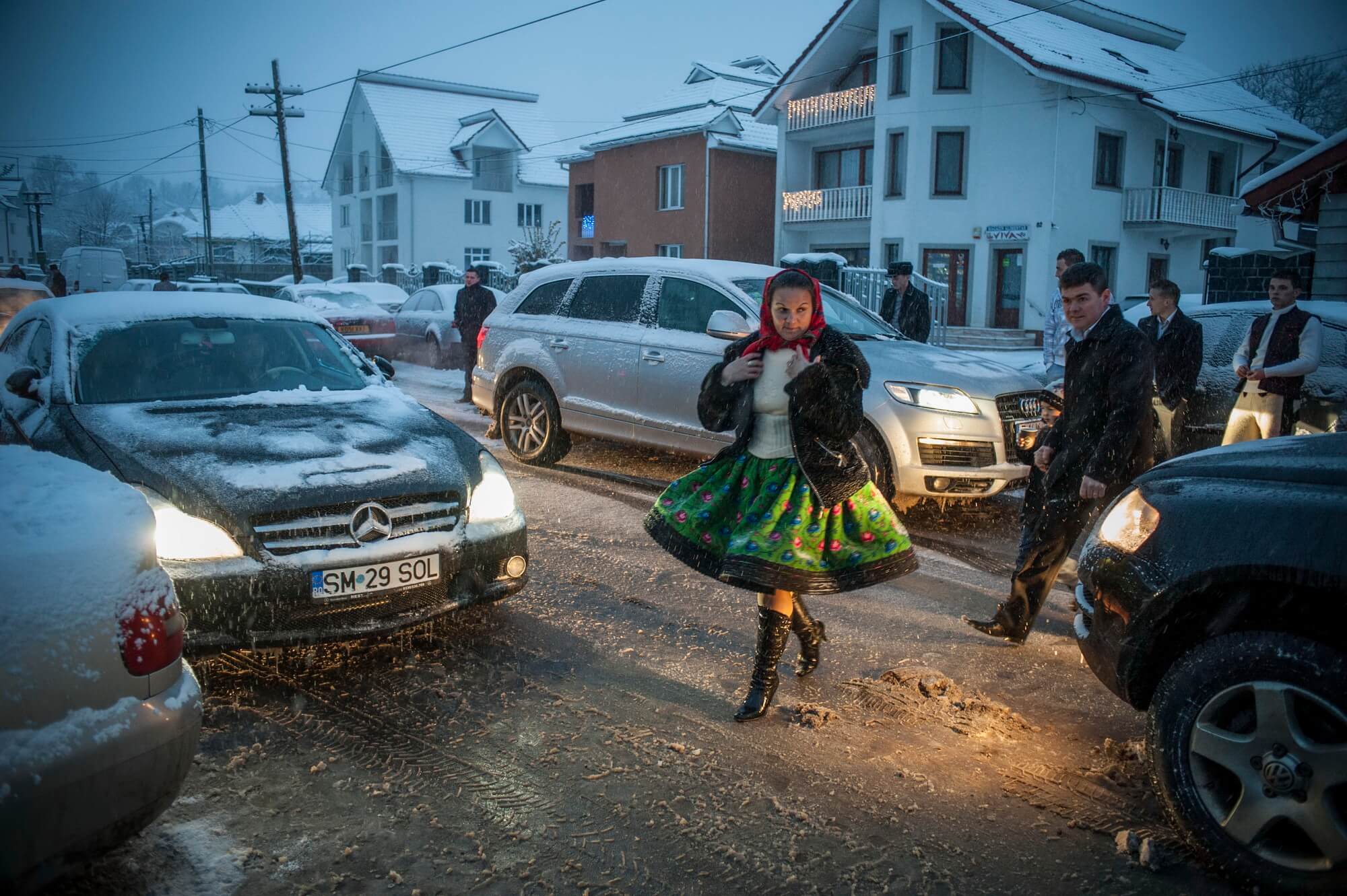
A woman in traditional dress crosses a street in the snow heading to the community centre where a wedding is taking place

A young couple from Tarsolt village who have just been married pose for a picture holding bottles of the local spirit which are shaped like the Eiffel Tower. These bottles have become a symbol of success in Romania. They are both working in the UK
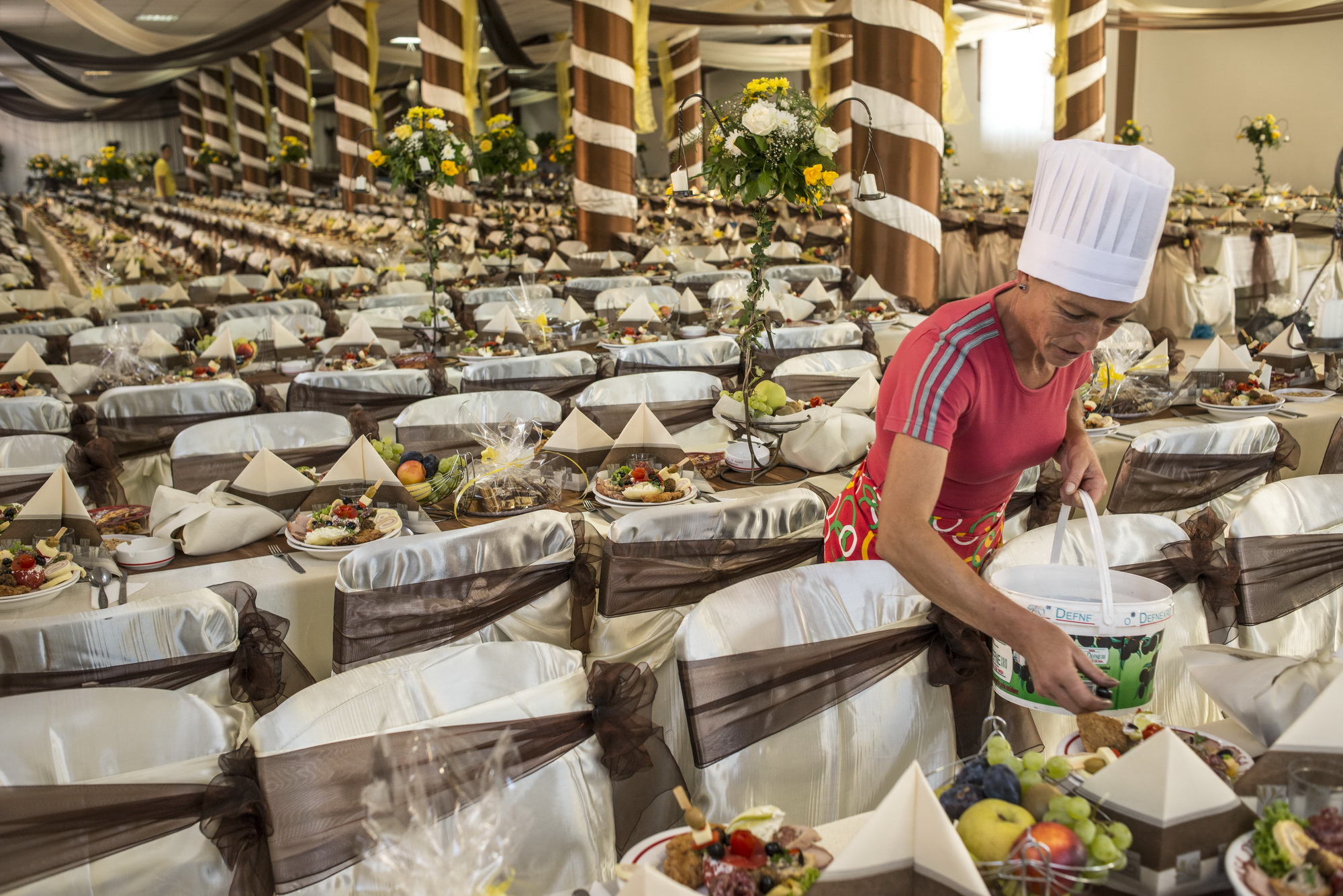
Wedding preparations in Certeze, Țara Oașului
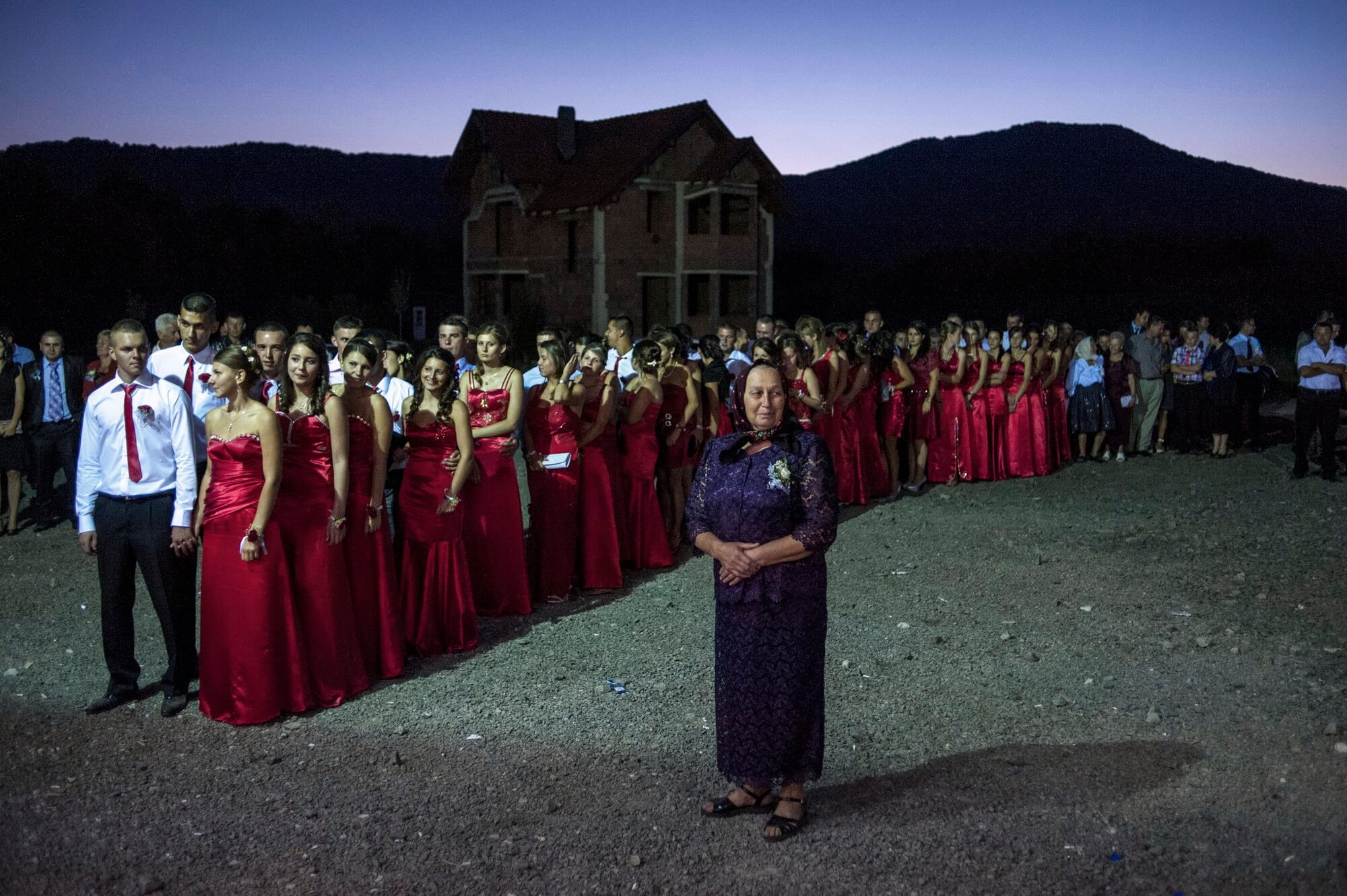
30 bridesmaids, all wearing dresses made from the same red material, line up to take their place at Maricuța and Ionuț's wedding. Maricuța and Ionuț both live in Paris. He works in the construction industry and she is a housekeeper. They have come back to their native village to get married.
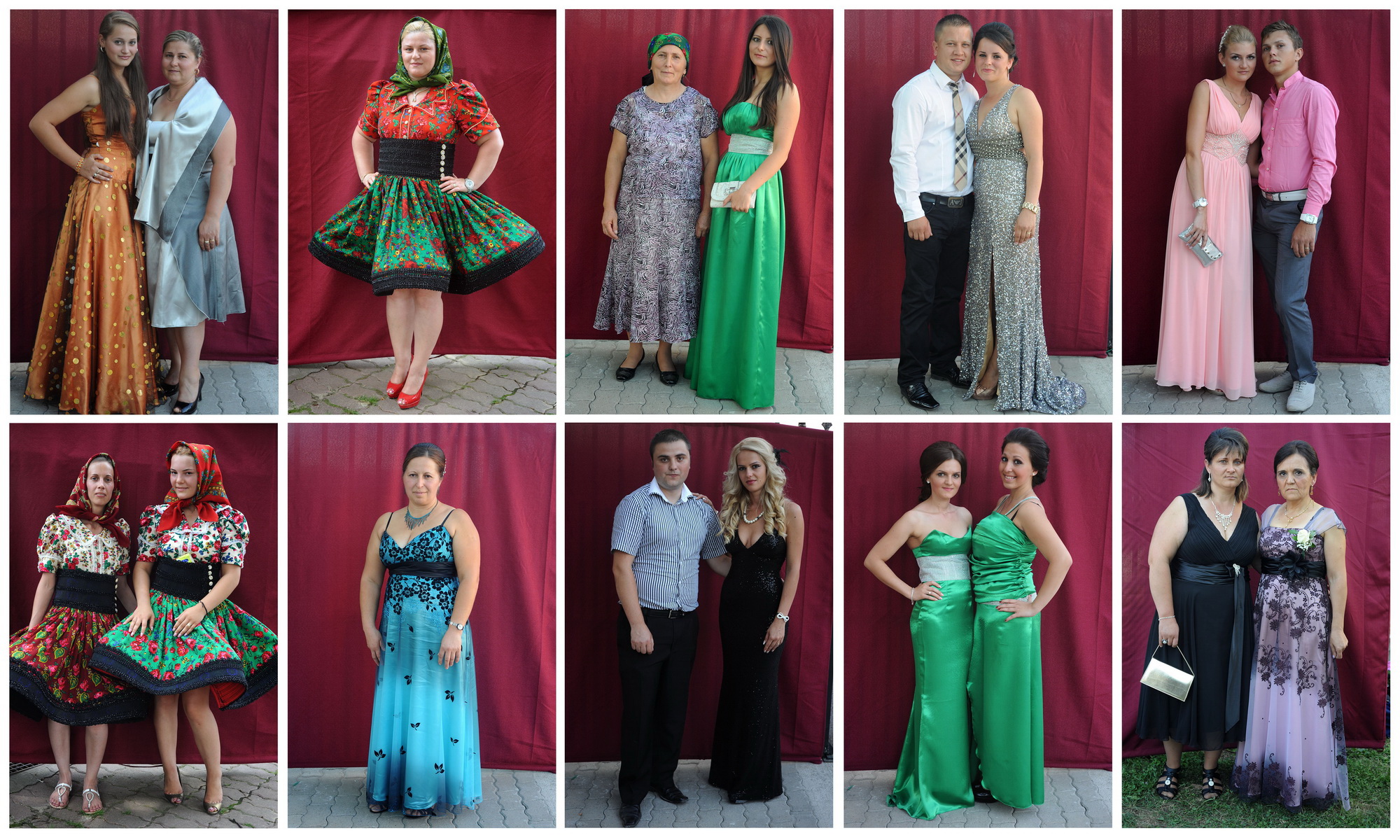
A composite pictures showing different people attending wedding parties in Țara Oașului. Almost all of them are working in France and come to their native village to spend the summer
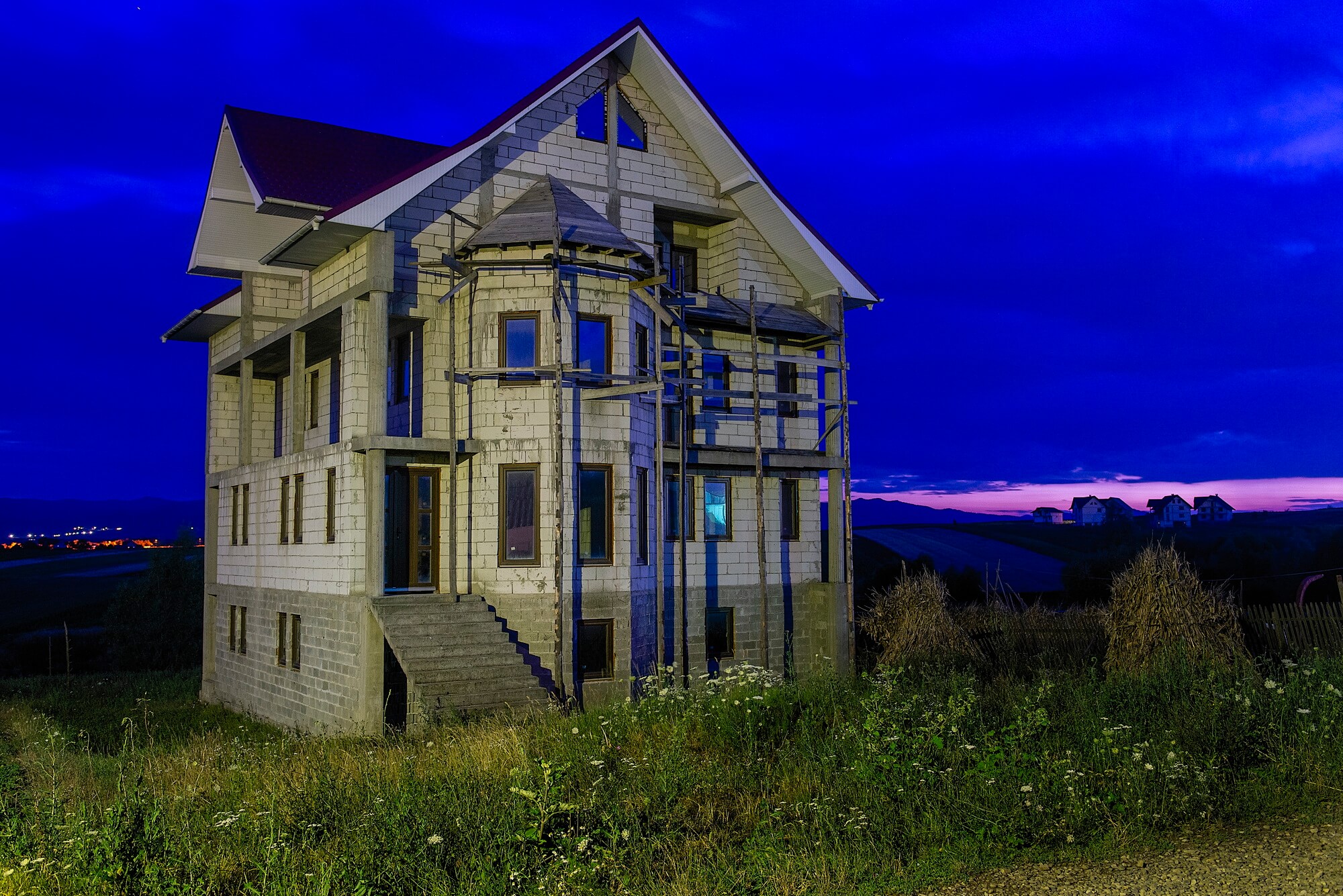
A new house built by people who left Romania to work in western Europe
Dacă îl cauți acasă pe țăranul român azi, n-ai să-l găsești. E plecat la muncă în străinătate. Și vrea să știi asta. Ți-a lăsat un mesaj – o casa din beton cu patru etaje, atât de mare „că poți să întorci tirul în ea”.Documentarea urmărește îndeaproape viața cotidiană a comunității oșenești și maramureșene care muncește în Paris, unde trăiește în condiții austere și economisește fiecare cent câștigat, pentru a se califica acasă într-o competiție socială din care nu se pot opri.
During most of the year, some Romanian villages are deserted. The gentle, bucolic sounds of small scale agriculture have been replaced with the muffled murmur of concrete mixers and village elders strut around on building sites, inspecting progress. The first to go abroad were the inhabitants of the village of Certeze. Before 1989, in communist Romania, people from Certeze were known as seasonal labourers within the country’s borders. Renowned for their endurance, people from this region were used in massive land clearance projects to gain more agricultural land and while the work was hard, it was also well paid. When Romania’s economy hit rock bottom, people in Certeze were adding another floor to their houses. After the collapse of the Ceaușescu regime, they were ideally placed for the itinerant life of a migrant labourer, living in tightly knit, mobile communities and enduring an austere lifestyle in order to save as much money as possible. Enterprising workers were soon paying guides to take them through the forests across borders toward Western Europe, determined to find their way to the West and make their fortunes.
Mândrie și beton este o expoziție foto despre tranziția satului tradițional de la casa fără niciun cui, la vila fără nicio șipcă de lemn, și despre dualitatea oșenilori și a maramureșenilor care la Paris trăiesc o viață de privațiuni și sacrificii, iar acasă afișează prosperitate și lux.
Muncesc până la epuizare 11 luni pe an; bărbații în construcţii și femeile la menaj. De mai bine de 15 ani dorm înghesuiţi în apartamente mici la periferia Parisului și economisesc fiecare cent. Se întorc acasă cel mult o lună pe an, în mașini scumpe, culeg prunele pentru horincă și cheltuiesc averi pe nunți, haine și petreceri. Dar mai ales, ridică vile în care probabil nu vor locui niciodată, care însă îi conving pe cei rămaşi acasă să urmeze și ei acelaşi model de succes.
Proiectul a fost finanţat de World Press Photo, Robert Bosch, Institutul Cultural Român Paris şi Administraţia Fondului Cultural Naţional Român.


